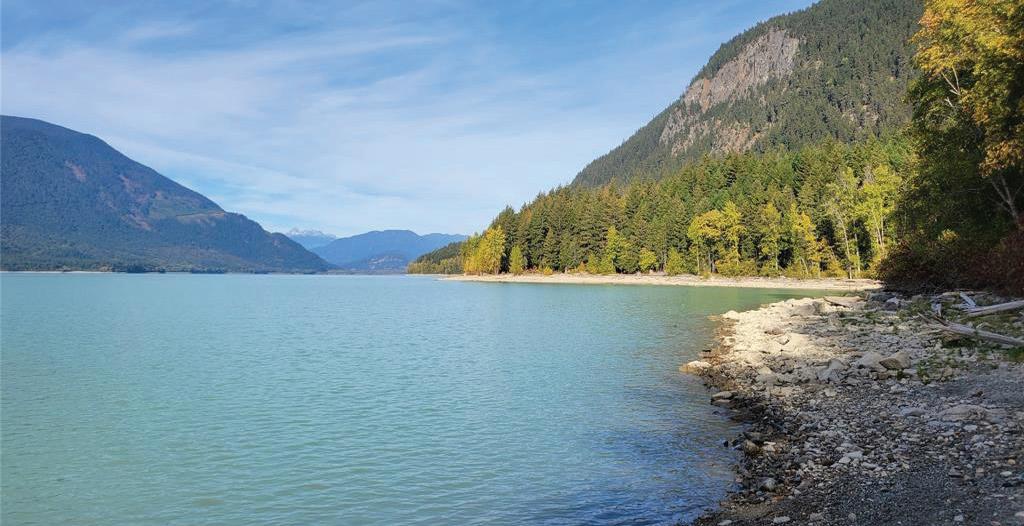



















































































































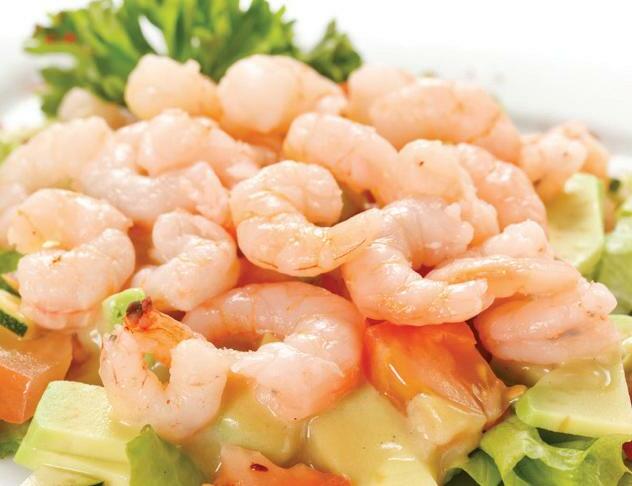
















Publisher SARAH STROTHER - sstrother@wplpmedia.com
Editor BRADEN DUPUIS - bdupuis@piquenewsmagazine.com
Sales Manager SUSAN HUTCHINSON - shutchinson@wplpmedia.com
Production Manager AMIR SHAHRESTANI - ashahrestani@wplpmedia.com
Art Director JON PARRIS - jparris@wplpmedia.com
TESSA SWEENEY - tsweeney@wplpmedia.com
GEORGIA BUTLER - gbutler@wplpmedia.com
Digital/Sales Coordinator AMELA DIZDARIC - traffic@wplpmedia.com
Production production@piquenewsmagazine.com
Features Editor BRANDON BARRETT - bbarrett@piquenewsmagazine.com
Arts Editor ALYSSA NOEL - arts@piquenewsmagazine.com
Social Media Editor MEGAN LALONDE - mlalonde@piquenewsmagazine.com

BRANDON BARRETT - bbarrett@piquenewsmagazine.com
MEGAN LALONDE - mlalonde@piquenewsmagazine.com
ALYSSA NOEL arts@piquenewsmagazine.com
ROBERT WISLA - rwisla@piquenewsmagazine.com
DAVID SONG - sports@piquenewsmagazine.com
Classifieds and Reception mail@piquenewsmagazine.com

Office and Accounts Manager HEIDI RODE - hrode@wplpmedia.com
Contributors G.D. MAXWELL, GLENDA BARTOSH, LESLIE ANTHONY, ANDREW MITCHELL, ALISON TAYLOR, VINCE SHULEY
President, Whistler Publishing LP

SARAH STROTHER - sstrother@wplpmedia.com
ISSN #1206-2022
Subscriptions: $76.70/yr. within Canada, $136.60/yr. courier within Canada. $605.80/ yr. courier to USA. GST included. GST Reg. #R139517908.
Canadian Publications Mail Product Sales Agreement #40016549.


















SITTING DOWN THIS WEEK to take part in one of my favourite annual traditions, I quickly came to a pair of startling conclusions.
Firstly, that I am very good at note taking, documentation and archiving (to a borderline obsessive extent). And secondly, that I am terrible at keeping new year’s resolutions.
The proof on both accounts was impossible to deny as it stared me in the face: a stack of one-sheet resolution lists piled nine high—one for every year I’ve been in Whistler.

 BY BRADEN DUPUIS
BY BRADEN DUPUIS
Each one listing the year at the top, and a smattering of goals and targets for the year ahead.
Year after year, always some variation on the same resolutions.
Eat healthier. Exercise more. Lose weight. Save money.
In short, be better, in all areas of your life. Easy.
Or easier said than done, in my case, judging from the lapsed resolutions repeated year after year, forever.
That’s not to say I have done no self improvement in the past nine years. Quite the opposite. Taken as a whole, I have actually accomplished much of what I hoped to all the way back in 2015, even if my method wasn’t exactly direct (or contained within a calendar year).
So it’s just not as cut-and-dry as a simple little annual list would have you believe, and progress is never a straight path from Point A to Point B.
Better isn’t something you become. It’s something you do, day in and day out, one decision at a time.
Maybe the turning of the calendar provides us the mental crutch we need to make the push, but in the end, new year’s resolutions aren’t worth much—so I’m not bothering to make any this year.
Instead, I’m reflecting on the year that was, and what might lie ahead—both for
myself and the wider world around me.


On that note, here’s just a few of the files worth watching in Whistler as 2023 gets underway.

It was another productive year for housing construction in Whistler in 2022, with two new Whistler Housing Authority buildings completed in Cheakamus Crossing and a small handful of other projects getting approved at municipal hall.
What’s on tap for housing in 2023?

More of the same, if we’re lucky, as the Resort Municipality of Whistler plots the next stage of Cheakamus Phase 2 and some long-awaited projects from private developers break ground.
Whistler can’t stop building more housing, but it will be interesting to see if council and the RMOW make any bold changes on the policy side of things as well.
We know Canada’s ban on foreign real estate buyers went into effect Jan. 1, with both Whistler and Pemberton exempt—but is there more that can be done locally to ensure the
And no, more minor tweaks to Whistler Housing Authority eligibility criteria are not the policy changes we need.
Local modelling predicts big things for Whistler, we learned last year: More visitors, more residents, increased workforce shortages and 50 per cent more traffic congestion by 2040, if nothing is done to mitigate current trends.
So at the outset of 2022, the future of Whistler hinged on one very big question: what to do about potential unconstrained growth?
The last official update on the so-called Balance Model Initiative—which seeks to answer that very big question—came before council in July, after which most attentions were understandably consumed by the October municipal election.
According to that July update, we can expect a “comprehensive set of recommendations” to come from the work, for council’s approval, sometime in 2023.
So at the outset of 2023, we are much where we were last year, wondering what can be done about these tremendous pressures we’re
on New Year’s Day, and plans to open two new exam rooms at the Whistler Health Care Centre and a satellite clinic on Main Street in the coming months.
It is encouraging to see such progress (not to mention the inspiring generosity and acts of charity that have made it possible)—but the work is far from finished.
The non-profit is currently looking to hire new care providers, while also looking at ways to procure new space to handle Whistler’s growing health-care demands.
It is proposing an innovative approach to a monumental problem, but the early returns are promising. I’ll be curious to see where the initiative stands at the end of 2023.
One of the biggest files at municipal hall in 2022 will once again take precedence in 2023.
The enhanced rezoning application for Whistler’s Northlands development north of Whistler Village stirred up all manners of debate in 2022, and the discussion is ongoing.
At the core of it all lies the future of the
best use of our housing inventory?
Word on the street is that the most acute housing crunch is no longer among Whistler’s front-line workers, but those middlemanagement types looking for a private one- or two-bedroom to start laying down roots.
Good luck.

If Whistler is serious about fixing its broken “housing continuum,” it will make addressing suite loss a priority in 2023—or watch all that managerial talent find somewhere better to live.

facing—in our parks, on our rivers, on our roads, and even in our local health-care system.
And on the topic of health-care in Whistler, if there is one point of interest worth watching above all else in 2023, it’s the work of the Whistler 360 Health Care Collaborative.
As reported in the Dec. 29 issue of Pique, the non-profit launched its new clinic model
Whistler Racket Club, which, as it currently stands, could very likely find itself without a home before the end of the year, as it is not being contemplated in any of the designs floated by proponent Beedie Living.


Will it live on in a new location? Or will 2023 spell the end of the Whistler Racket Club? Time will tell.
In the meantime, we wait for the next update to mayor and council, expected sometime this winter. ■
t

*O f fe r a p p i e s to re g u a r p ri c e of a TELU S S m a r t H o m e S e c u ri t y ( S H S ) p a n s exc u d i n g S m a r t C a m e ra S H S p l a n s re q u i re e i th e r a 3 -ye a r o r 5 -ye a r te rm
d e nti
e pt S m a
a m e ra a n d S m a r t Au to m ati o n Pl u s p l a n s w h i c h o n y q u a f y fo r a 3 -ye a r te rm Ava a b l e to ex i s ti n g TELU S o r Ko o d o M o b i t y p o s t- p a i d c o n s u m e r c u s to m e r s w h o a re a l s o s u b s c ri b e d to at l e a s t 1 TELU S re
C
m e r s w i th a n a c ti ve c o n s u m e r TELU S o r Ko o d o M o b i t y p o s t- p a d a c c o u nt w l re c e ve a d i s c o u nt of $1 0/m o nth C u s to m e r s w i th a n a c t ve e g i b l e
5/m o nth A l l S H S p a n s i n c l u d e TELU S O n l i n e S e c u ri t y (“ TO S ”) TELU S O n l n e S e c u ri t y B a s c (fo r S m a r t C a m e ra a n d S m a r t Au to m at o n P u s p l a n s) o r TELU S O n n e S e c u ri t y S t a n d a rd (fo r S e c u re a n d C o ntro ) D s c o u nt s a re a p p l i e d o n th e S H S p l a n a n d TELU S re s e r ve s th e r g ht to re m ove m o b i l i t y o r h o m e s o l u t o n s d s c o u nt s i f th e c u s to m e r n o l o n g e r m e et s e l g b l i t y re q u i re m e nt s C u rre nt re g u a r p ri c n g c a n b e v i ewe d at te l u s c o m / h o m e s e c u ri t y O f fe r s a n d re g u a r p ri c i n g s u b e c t to c h a n g e w i th o u t n oti c e M i n m u m s y s te m re q u re m e nt s a p p l y Eq u i p m e nt m ay n ot b e a s s h ow n Fi n a l e l i g i b i t y fo r th e s e r v c e s w b e d ete rm i n e d by a l c e n s e d a n d c e r ti fi e d TELU S te c h n i c i a n A c a n c e at o n fe e a p p l i e s fo r e a r y te rm n ati o n of th e 3 -ye a r o r 5 -ye a r s e r v i c e a g re e m e nt e q u a to $1 0/ m o nth fo r th e S m a r t C a m e ra a n d S m a r t Au to m ati o n Pl u s p a n s , a n d $ 35/m o nth fo r th e S e c u re a n d C o ntro p l a n s , m u ti p l i e d by th e n u m b e r of m o nth s re m a i n n g i n th e s e r v i c e a g re e m e nt (w i th a p a r t a l m o nth c o u nti n g a s a fu l l m o nth), p l u s a p p l c a b e t a xe s R e nt a l e q u i p m e nt m u s t b e retu rn e d i n g o o d c o n d i t o n u p o n c a n c e l at o n of s e r v c e oth e r w s e th e re p a c e m e nt c o s t w i l b e c h a rg e d to th e a c c o u nt Profe s s i o n a l n s t a l l ati o n fe e of $150 a p p e s fo r a l l p rofe s s o n a y i n s t a l e d p l a n s a n d c u s to m e r s w h o s u b s c r b e to 1 o r m o re of th e fo l ow i n g s e r v i c e s p o s t- p a i d TELU S M o b i l i t y S m a r t H u b o r H i g h S p e e d I nte rn et Th e p rofe s s i o n a l i n s t a l l ati o n fe e fo r a l l oth e r c u s to m e r s i s $ 4 50 Ad d ti o n a l i n s t a l l ati o n fe e s m ay a p p l y fo r ex tra e q u i p m e nt A $1 0 0 k t fe e i s c h a rg e d o n s e lf- i n s t a l l o rd e r s a n d i s 1 0 0 % refu n d a b l e w h e n s e r v i c e i s a c t vate d w i th i n 3 0 d ay s of o rd e r Th i s i n c l u d e s i n s t a l l ati o n of a u to m at o n a n d s e c u r t y d ev i c e s a p p n s t a at o n a n d a wa l k-te s t w h e re re q u re d O n c e yo u r s e r v i c e s a c ti vate d yo u w i l b e n ot fi e d by e m a i l w i th i n 5 b u s i n e s s d ay s th at th e k i t fe e h a s b e e n a u to m ati c a l l y refu n d e d to yo u r b l O f fe r ex p i re s J a n u a r y 15 2023 TO S Le g a Te rm s A l S H S p l a n s i n c l u d e TELU S O n l i n e S e c u r t y (“ TO S ”): TELU S O n l i n e S e c u r t y B a s i c (fo r S m a r t C a m e ra a n d S m a r t Au to m at o n P u s p a n s) o r TELU S O n i n e S e c u ri t y S t a n d a rd (fo r S e c u re a n d C o ntro ) N o o n e c a n p reve nt a l l cy b e rc ri m e o r d e nt t y th ef t Ac t vati o n th ro u g h N o r to n Li fe Lo c k s re q u re d N ot a p ro d u c t s s e r v i c e s a n d fe atu re s a re ava i l a b e o n a l d ev i c e s o r o p e rat n g s y s te m s S y s te m re q u i re m e nt i nfo rm at o n o n N o r to n c o m
If I’m being completely honest, I’m literally the effing worst Valley Trail user, at least according to some. Most?! Sorry—for those who don’t know me, I’d like to consider myself thoughtfully dramatic, somewhat theatrical.

In any case, I was that guy that achieved his Olympic dream, not by winning a gold medal, but instead by earning the right to wear 12 chocolate ones! I ran around town during the 2010 Olympics screaming, “I love this place!” in a red tracksuit, waving a big Canadian flag. I’m not sure I would’ve been able to express the same emotion in 2030 (who am I kidding?! Of course I would have, albeit perhaps with more awareness, a touch less unbridled enthusiasm).
My local status is “lifer,” my housing situation is “well-housed, not well-built,” yet I still find reasons to complain.









That said, before I go on a not-too-muchmore-than-400-word rant about the state of our fragile unity, I’d simply like to make it clear that I’m wholly invested in this place. Or at least in what I am capable of offering.
For me, the dream came true long ago. Like many, it was by the seat of my pants. For better or worse, I’m still living it.
Back to my point; I use the Valley Trail daily,


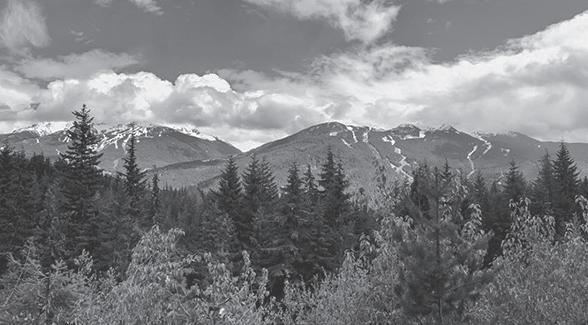

both as a dog owner and as an e-biker. Everybody hates me either way. But it’s for good reason.
There’s an old saying. “There are no bad bicycles, just bad owners.”
I’m 8,000 kilometres into replacing whatever kilometres my 5.7-litre V8 350 smallblock would have previously burned driving around town.
I’m still not sure which mode of transport is cheaper, in terms of cost per kilometre. I’m on my second battery on my e-bike. Electricity and inclement weather just don’t mix. EV fires are a thing on the internet. Am I the only one out there that doesn’t want a computer buffering while
travelling at highway speeds? What’s the term again, planned obsolescence? Where on Earth is all the lithium going to come from? I can’t be the only one whose computer is outdated in a matter of a few short years.
For being such a mecca for bicycles, this place is so wholly unfriendly to anyone trying to replace fossil fuel kilometres with e-bike kilometres.
Saving the planet isn’t something that only happens for just the three or so months of the year that riding a bicycle here is easy. One has to step it up in terms of safety. Ironically, the


more effort I make to make my e-bike safer— bigger tires, a DOT rated helmet, a brighter light—the more dramatic the reactions are.
Even if I’m riding slower than everyone else, just because I’m basically cosplaying an organ donor (motorcyclist) with a hilarious yet very functional abundance of cardboard and duct tape, people just see motorcycle and immediately scowl with disapproval. No matter how big my smile is.
After years riding around the community, I’ve caught a few impressions. I’m aware I’m also on Team Weirdo, so maybe that’s where the disapproval comes from? But that’s a whole ‘nother 400 words.
Attitudes are fairly predictable in the different communities around town. Some neighbourhoods are just more welcoming than others. I know the rules. My e-bike is pedal-assist only, no throttle. I even step it up, I’m half Dutch, and limit my speed to 25 km/hr.
We’re going to have to have a massive paradigm shift in personal transport if anything is to change. But if economics are going to trickle down, so should social change. In any case, my hopes aren’t up.
Large new vehicles, EV or not EV, come with a huge carbon footprint before they leave the lot. This should change. There’s something here to learn from the Star Wars universe. They can fix anything.
I see more and more people trying to ride in inclement weather this year. It’s encouraging! Albeit, also a little frightening. It’s sketchy AF.
With the current bicycle-friendly routes
If I’m completely honest, I’m literally the effing worst ...
available in town, I can see how many don’t feel comfortable riding a bicycle year-round, let alone in the dead of summer. Or even at a safe speed on the Valley Trail; it’s a long way around if you need to be somewhere.
I’m happy to pay more in taxes if it means more amenities for the little people. Really, we should all be taking the bus. But this isn’t a place known for patience. Lots of line-ups, but everybody wants be wherever they’re going faster than they’re ever going to get there.
The shoulder on the highway is narrow, and full of potholes. And on the spectrum between pedestrian to gas-powered scooter, quite speed diverse. Pulling into traffic is something that has to be considered often and with extreme caution.

On the flipside, I can’t tell you how many times I’ve been walking my dog and a cyclist comes out of nowhere at 50 km/hr, not even breaking rhythm, hammering pedal strokes.

Is it so hard to put a whole bunch of bright signs explaining what speed you should be going? The 30 km/hr speed limit on the road is followed, for the most part, without enforcement. Do we need speed bumps? Rumble strips?
E-bike or no e-bike, it’s not cool to pass someone walking at that speed without warning. While you may be passing many people, if you’re walking you might not see another soul for half an hour. Why aren’t bells on the Valley Trail mandatory?
On the dog-walking note, on-leash or offleash, a dog that wants to say hi or eat something is hard to control. Especially if an owner is enjoying someone else’s company. Most leashes are at least six feet long, which is more than enough to get in the way of traffic. The simple solution is this: buy brake pads in bulk. CTFO, slow down FFS. Share the trail.
The long-term solution is to make a twolane bike lane on the highway separated by a concrete barrier, and paint it bright orange, because everyone in town should be made aware that this is not our land—we are the guests here.
It would give the commuters who are in too much of a hurry to slow down a place to get somewhere fast and return the Valley Trail to all those just cruising, trying to take in the view.



And with that, we used to be a community full of people that, even on the darkest days, could still conjure up a friendly smile for those passing by. It’s my favourite thing to do, but reactions have changed with time. I hate that we’ve come to a place where a big smile can be met with a big side-eye.
Be friendly, kill with kindness, big smiles go miles! If you’re on a bike this time of year, keep in mind no one is expecting you to be there, use a few simple kind words when passing. Ride safe, hope the rubber side stays down, keep those feet on the ground.
Jon Parris // Whistler ■



As we head into the weekend, there is some uncertainty about the weather and how the snowpack will react to it. We are confident that a series of low-pressure systems will impact the Sea to Sky area. What is less certain is the intensity of these systems. This incoming weather will have implications for the avalanche hazard, but likely won’t have enough energy to start sounding the dangerous-conditions alarm.
“Middle of the road” is a good way to describe our current snowpack. The presence of a deep, persistent weak layer this early in the season means it is certainly not a great
CONDITIONS



snowpack. With that being said, the current state of the snowpack is not as undesirable as it has been at times this season.
So what does this mediocrity mean for you, the backcountry enthusiast? It means keeping an eye on the weather and the avalanche forecast and planning your goals appropriately. For us, as avalanche forecasters, it means job security as we continually need to assess and reassess conditions.


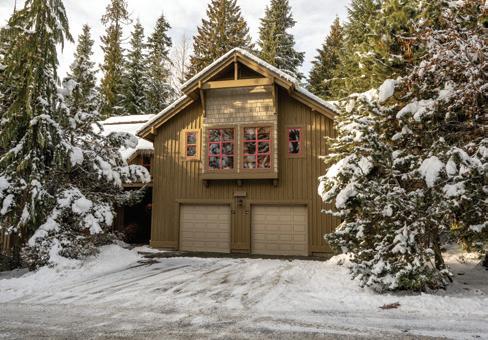

Don’t forget, in addition to getting your avalanche forecast at avalanche.ca, you can also keep an eye on mountain weather with our mountain weather forecast there. ■

heading out into the backcountry.
604-938-7676, or surf to www.whistlerblackcomb.com/mountain-info/ snow-report#backcountry or go to www.avalanche.ca.
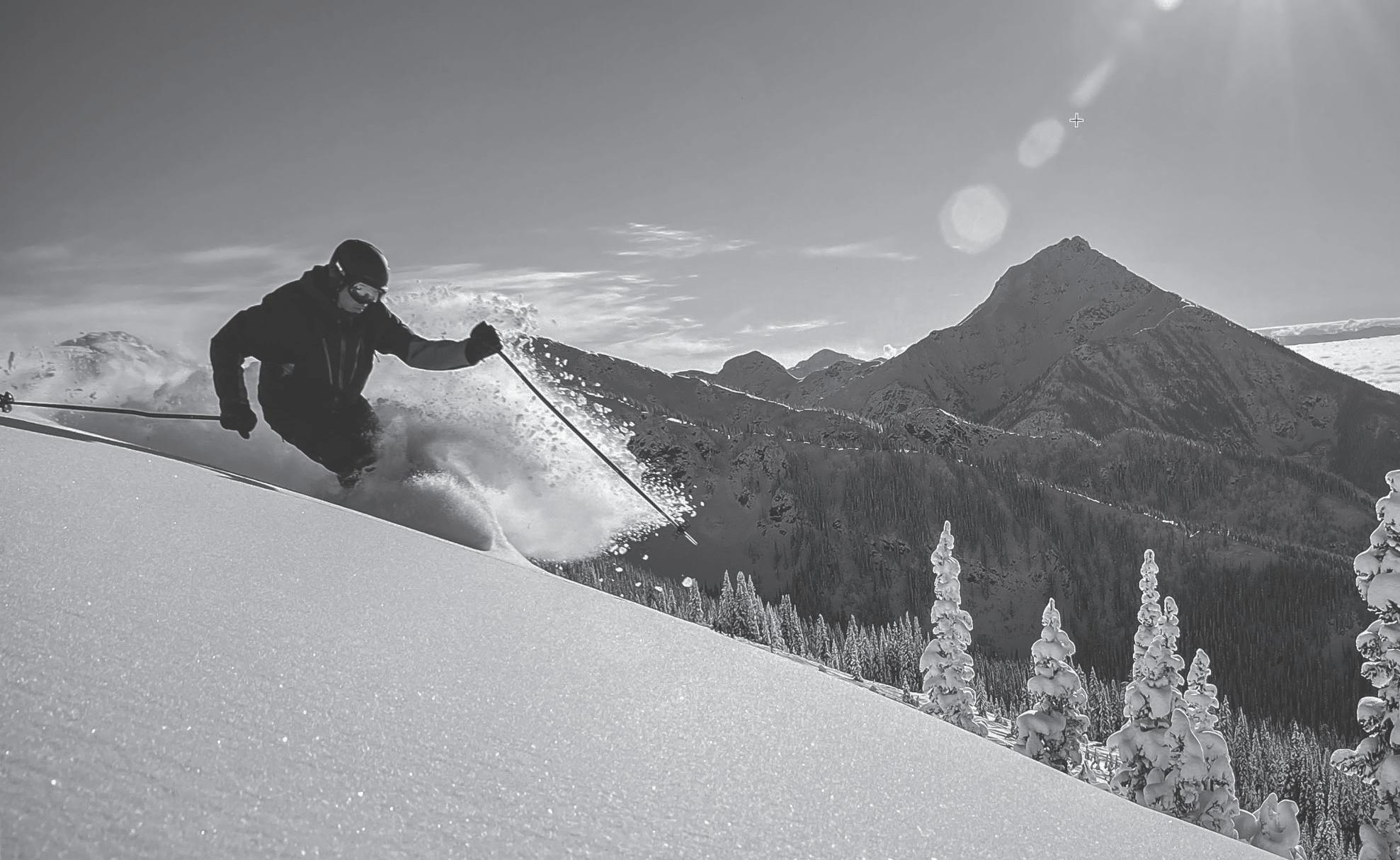



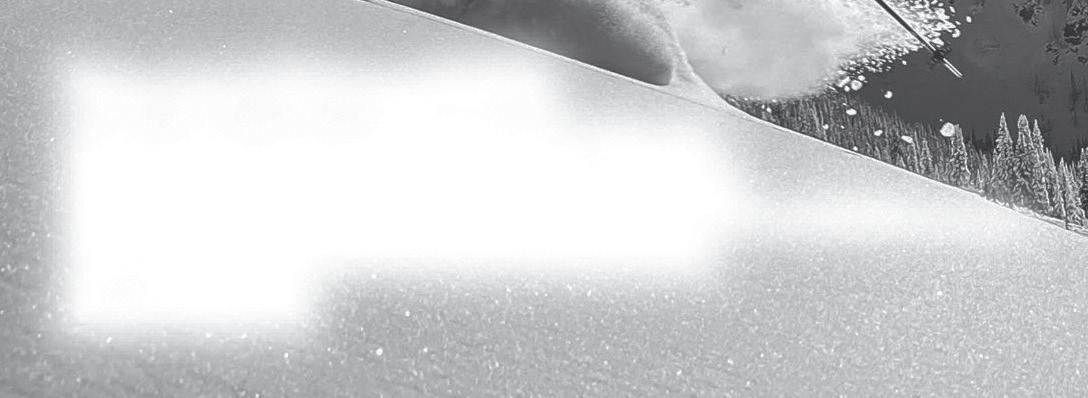







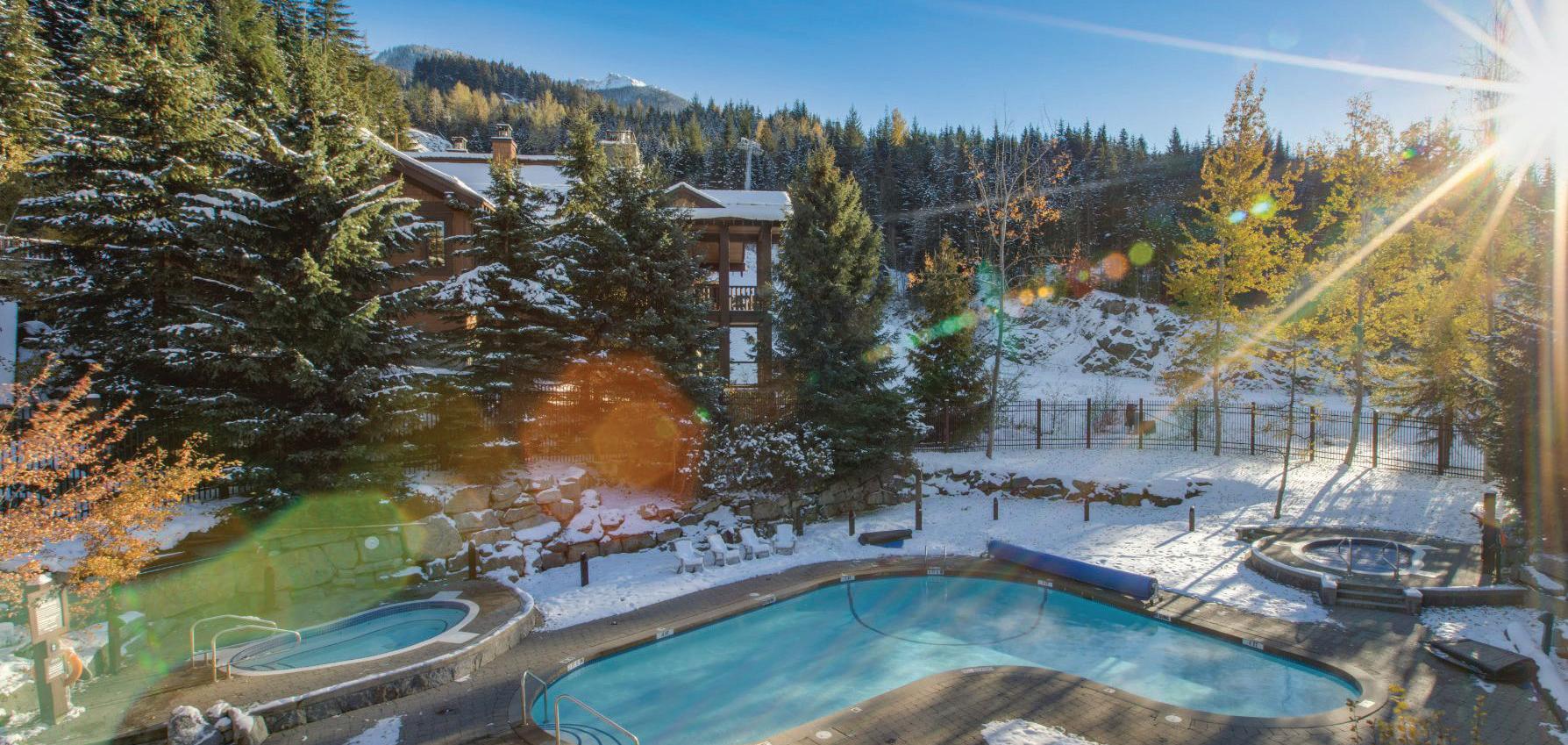






IF YOU ARE SOMEONE who doesn’t exactly believe Einstein’s theory that time is an illusion, chances are you haven’t lived in Whistler long.
How many times have we heard that classic Whistler story? You know the one: someone shows up for a weekend or two, blinks, and then, next thing they know, years
 BY BRANDON BARRETT
BY BRANDON BARRETT
have passed, and they have gone from merely flirting with the Whistler lifestyle to fully embodying it.
It’s the kind of expansion and contraction of time I have experienced first-hand myself. When I first landed in the resort in 2012, I told myself I’d be lucky if I lasted a year, and a decade later, I’m still here, more sucked into the Whistler cocoon than I ever was, still feeling like the past 10 years were mostly a blur.


I have a few theories as to why Tiny Town can feel like such a time warp, and it has little to do with quantum physics (sorry, Albert!). First and foremost, time flies when you’re having fun, as the saying goes, and Whistler is of course designed with fun at top of mind, an outdoor lover’s paradise. The fact that we’re a consummate party town offering any number
of ways to imbibe I’m sure does not help in the memory department, either.
But more influential than that, in my opinion, are the cyclical rhythms that govern everything we do here. Although we are less divided along seasons than we used to be, thanks to efforts to transform Whistler into a four-season resort, the reality is we still hew to the same recurring patterns that come with being a ski destination. We know, for instance, that every November brings with it a fresh influx of front-line staff,
There are few communities on Earth that have to organize and reorganize themselves with such frequency and at such scale as we do, and the constant churn can have a stultifying effect on Whistler’s institutional memory, something I wrote about in a recent column. It makes the work of preserving and sharing the resort’s history and present all the more essential.
“I think every community can struggle in how it preserves and documents peoples’ experiences, and also what it deems




questioning whether the alluring pull of the Whistler cocoon has impacted more than just my memory. We are a community of risktakers, and I’m not just talking about the adrenaline junkies who huck themselves off cliffs. To even eke out an existence here in one of the most expensive towns in the country, in one of the tightest housing markets around, requires a leap of faith. And for the same reasons that can make it difficult to live here, we have become adept at convincing ourselves that pursuing a life of passion makes all the hardship worth it. Maybe it is. That’s a calculation that each of us has to make individually. But I think the same rationale we use to justify our lifestyle here is the same one that can prevent us from stepping out of the infamous Whistler bubble. Let’s face it: life here, for all its inherent challenges, is pretty simple, and compared to the so-called “real world,” definitely has its appeal.
and that every May brings with it a mass exodus of residents (and restaurant deals!). Although the faces may change, the cycle remains the same, year after year, and that hamster-wheeling has a way of dimming our memories. It’s something we talk about in the Pique newsroom, where the weekly grind of putting out a paper means that, after a while, the weeks tend to blend together—a hamster wheel within a hamster wheel.

important to preserve,” wrote Whistler Museum executive director Brad Nichols in an email this winter. “The experiences of people coming to Whistler for a season can often be overlooked and can be harder to document, but are no less valuable than that of longterm residents and the broader institutional knowledge of the area.”
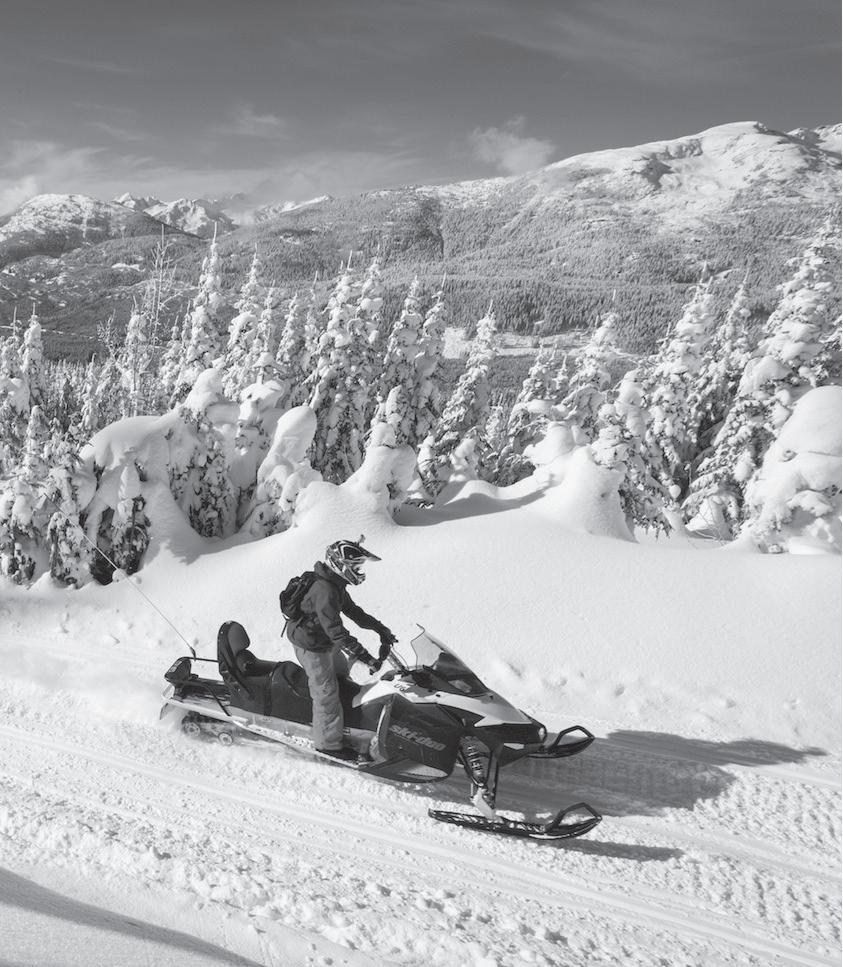
As I wrestle with what my own postWhistler life could look like, I have been
So, how to know when to pull the plug? That’s the million-dollar question. As I’ve seen several friends and longtime locals leave the resort for greener pastures in recent months, I sometimes wonder if we’re the last ones left at a party that has stretched far too late into the wee hours. I don’t have the answers, and I’m certainly not finger-wagging anyone who has carved out a meaningful life for themselves here. I just hope when my time finally comes to bust out of the Whistler cocoon that I will take that leap with clear eyes and open arms. ■

There are few communities on Earth that have to organize and reorganize themselves with such frequency and at such scale as we do...
ASSESSED PROPERTY values in Whistler and the Sea to Sky continued to climb in 2022, but still trailed behind the massive increase in value the corridor saw following the province’s last assessment.
Whistler saw an 11-per-cent increase in the median assessed value of single-family homes, from $2,626,000 to $2,902,000, according to BC Assessment, while the assessed value of the resort’s strata properties—townhomes and condos—rose by 17 per cent, from $1,154,000 to $1,345,000.
Released annually every January, the assessed property values reflect the market rate as of July 1 the previous year.
Rates in the Sea to Sky mostly align with trends seen across B.C., said Bryan Murao, assessor with BC Assessment.
“I think what we’ve found is that, outside of, say, Vancouver and maybe the North Shore, the trends are quite consistent across most of the province. Places like Squamish, Whistler and Pemberton tend to be quite similar, and we’ve seen quite similar trends there for the past few years.”
Though still in the double digits, the increases trail last year’s, when the median
assessed value of a single-family home in Whistler rose by a whopping 29 per cent, while the value of strata properties climbed by 24 per cent, a relative anomaly following two years of slowed growth.
“At the time, prior to the assessments, we saw the market going nuts the year before and then probably January, February [2022], it was still kind of nuts, and from then it’s been stagnant,” explained RE/MAX Sea to Sky Real Estate co-owner Matt Chiasson. “We didn’t see any prices crashing. We didn’t see any prices falling, but [sales] were stagnant ever since. So most of this increase will have been from July 2021 to January, February [2022], and then leveled off.”
Ann Chiasson, also a RE/MAX Sea to Sky Real Estate co-owner, said interest rates have contributed to the slowdown in sales activity towards the back half of the year. According to RE/MAX data, in the third quarter of 2022, there were 23 single-family home sales in Whistler and 35 strata property sales. Compare that to Q3 of 2021, when Whistler saw 51 singlefamily home sales and 115 strata property sales.
“There’s been some definite flips from a buying perspective,” Ann said. “Interest rates have had a major impact on people’s minds— not so much on whether they should buy or not, but it just makes people hesitate a little bit.”
Even with a cooldown in sales, because of Whistler’s lack of inventory—there are fewer than 200 listings currently on the market—and its inherent desirability as a resort, don’t expect property prices to drop significantly in 2023.
“Relatively speaking, I don’t think we’re
going to see the kind of increases we’ve been seeing, but I also don’t think we’re going to see something that anyone would deem a drop in the market, especially with nightlyrental and strata properties,” said Dave Brown, realtor with the Whistler Real Estate Co. “We may see a little softening on singlefamily [home prices] and less activity there, but the desirable properties, like lakefront, are still attracting attention. They may be on the market a little longer, but they are still in demand.”
Whistler’s high price point is contributing to a years-long trend in the corridor that has seen buyers increasingly push into Pemberton, Squamish and beyond—particularly in the strata market. Pemberton, for instance, saw the median assessed value of townhomes and condos increase by 17 per cent last year, while the median value in Squamish—a community that is also heavily influenced by market trends in Vancouver—rose by 16 per cent.
“Pemberton is a by-product of Whistler. Whether they like it or not, Whistler is affecting their pricing,” Ann noted.
In other property categories, the median assessed value of business properties rose 29.5 per cent in Whistler in 2022, 37.8 per cent in Pemberton, and 33.4 per cent in Squamish, while light industrial property values increased 115.4 per cent in Whistler, 42.1 per cent in Squamish, and 131.8 per cent in Pemberton.
“Businesses that are struggling after the pandemic are now facing this increase in their triple net [lease], which is going to further put
BY 17%pressure on them when they’re having staffing issues,” added Ann. “If light industrial goes up that much, the landlord will pass it along.”
Whistler also counted seven of B.C.’s 50 highest-valued residential properties in 2022, including a Stonebridge home listed for $32,961,000 as of July 1, making it the 13th highest-valued property in the province.
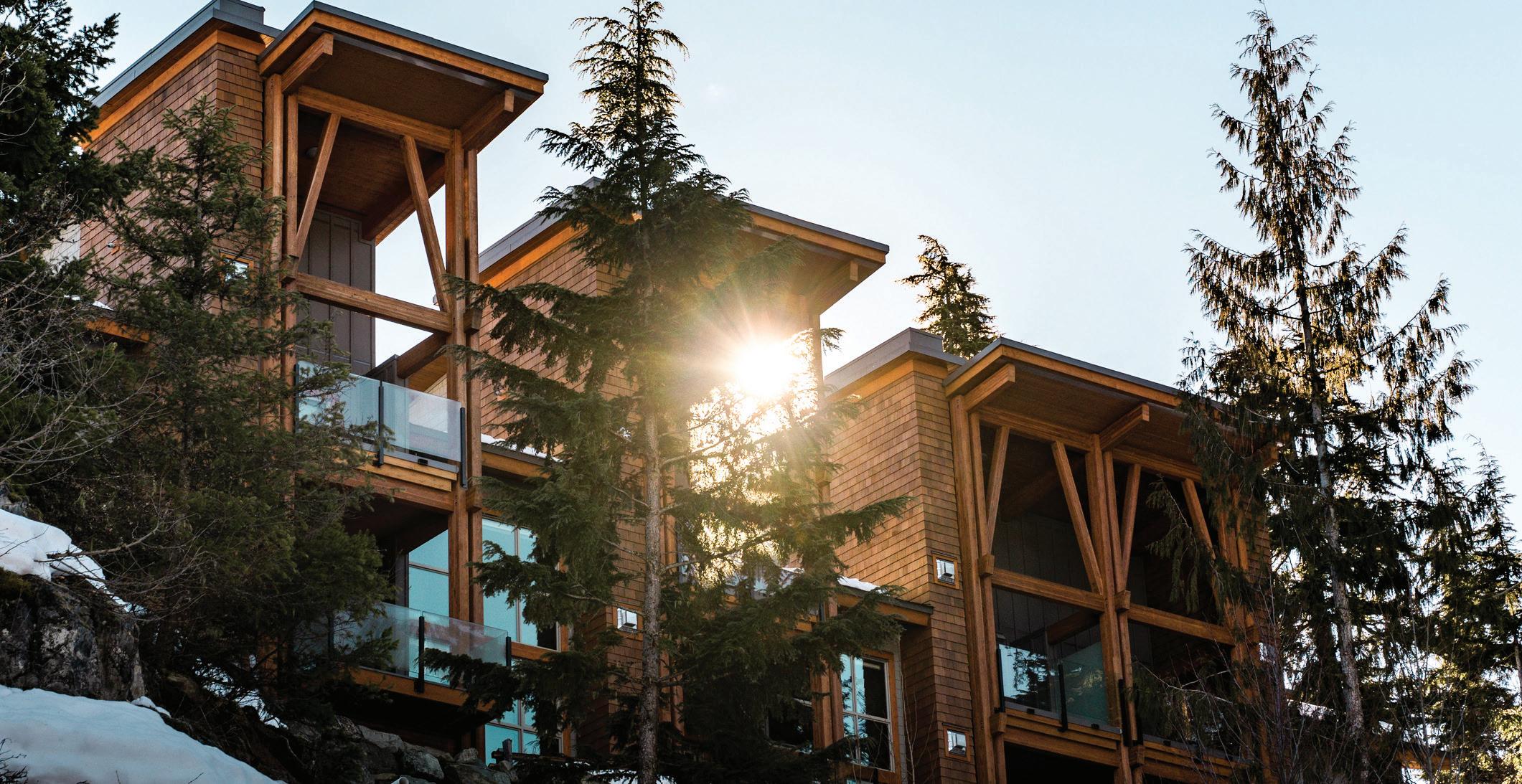
The total assessed roll for Whistler at the midway point of 2022 was approximately $28.9 billion, up 15 per cent from the prior year. In Pemberton, that total jumped 25 per cent, to roughly $1.7 billion, and in Squamish, the total assessed roll increased 16 per cent, to approximately $14 billion.
Property owners can expect to receive their formal assessments in the coming days. It’s worth noting changes in property assessments do not automatically translate into a corresponding change in property taxes.
“As noted on your Assessment Notice, how your assessment changes relative to the average change in your community is what may affect your property taxes,” Murao said.
Owners who believe their assessment is inaccurate can submit a Notice of Complaint appeal by Jan. 31 for an independent review by a Property Assessment Review Panel—but are advised to contact a realtor before taking that step.
“The best step for someone if they want to check is to contact a realtor to get a CMA, a competitive market analysis, on what their house is worth,” Matt said.
You can check the assessed value of your property at bcassessment.ca. n
PROPERTY PRICING The median assessed value of a single-family home in Whistler rose 11 per cent in 2022, according to BC Assessment.
ULTRA-MARATHONERS —particularly those running 100-kilometre or 100-mile distances—need to plan their seasons well in advance.
That’s why, at the beginning of last month, Coast Mountain Trail Running (CMTR), which organizes popular trail races around the Sea to Sky and Lower Mainland, decided to warn potential racers that its Whistler Alpine Meadows (WAM) event up Whistler Blackcomb might not take place in 2023.
“As of right now today, we are deep in the permit process with Whistler Blackcomb/ Vail Resorts to simply reproduce in 2023, what we successfully hosted there in 2022,” read a letter from CMTR to its runners. “We have not been granted approvals for anything at this time. Vail has introduced a new approval process which they just launched, with a best timeline of early in 2023 for a final answer. As much as it pains us to say this, there are zero guarantees that WAM will happen in 2023. Yes, after six years of successfully producing these races in Whistler, we still find ourselves with unexpected challenges to get things off the ground, and this is completely out of our control right now.”
While CMTR fully supports having a formal permit with Vail Resorts, the long processing time has proven to be a challenge, said CMTR co-founder Geoff Langford.
“We don’t begrudge this process at all,” he said. “It’s great. It’s just the timing, and we’ve expressed this to them too. Everesting and other events got grandfathered in and are good to go. We have this event that’s happened every year and knew it was coming back. That’s our frustration—that they couldn’t say, ‘Yes, it’s good to go. We just need to work through this process with you guys.’”

(Pique reached out to 29029 Everesting, which runs an event up Blackcomb, to ask about its permitting process, but did not receive a reply by press time. However, the company’s website confirms the 2023 event, set in September—the same month as WAM— is sold out.)
For its part, in an email, Whistler Blackcomb said, “Our team is currently in the application review process and has no further comment at this time.”
A spokesperson declined to answer any questions.
In 2022, WAM took place at Whistler Blackcomb Sept. 9 to 11, with six different race distances and events. They ranged from Ascent Race all the way up Blackcomb Mountain to the 100-mile distance. Last year, it was also only one of two Canadian races that served as a qualifier for the coveted Hardrock 100 in Colorado.
“We’re hopeful it will happen in [in 2023],”
Langford said. “Tourism Whistler reached out to us back in 2019. They saw the potential of the event and wanted to work with us on an economic impact study and look at ways to build out the event and make it more valuable for the community. We did that last year, now that we’re back at full strength [after COVID cancellations].”
The results of that study are expected in the near future.
CMTR also runs the popular Squamish 50 race, which back in 2016 had an economic impact study done on its value to Squamish. “It was just under $1 million, but that event has at least doubled. I would guess that economic impact has tripled,” Langford added.
The team is looking forward to having a formalized permit with Vail Resorts, as they do in many other communities. But they hope that more communication can take place so they can pass that information onto runners.
“We’ve had minimal communication,” Langford said. “For an event that’s been around six times and donated tens of thousands to trails and [in] volunteer time, it’s frustrating … If it takes until February, it might be enough to kill the event for a year.” n



 BY ROBERT WISLA
BY ROBERT WISLA
WHISTLER COULD SOON see one of the most significant tax increases in its history.

On Dec. 20, council gave its assent to the Resort Municipality of Whistler’s (RMOW) proposed 2023 budget guidelines, which include an 8.4-per-cent increase to property taxes in 2023, along with increases of three per cent for water, four per cent for solid waste, and five per cent for sewer fees and taxes.

The property tax increase is up 0.1 per cent from the amount first proposed at the Dec. 1 budget open house, a slight bump the RMOW attributed to a $30,000 increase in Fee For Service funding for Arts Whistler approved Dec. 6 (see related story on page 18).

Though everyone’s tax bill will vary based on multiple factors, the tax increase will cost about $400 for the average singlefamily homeowner in Whistler. As of 2023, the average single-family home is assessed at $2.9 million, up 11 per cent from 2022 values.


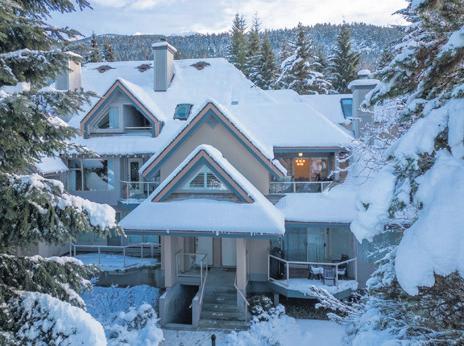

While the tax increase is steep, RMOW director of finance Carlee Price believes it is necessary to combat rising inflation and is in line with what most other municipalities are raising taxes by this year in B.C.


Inflation in Canada rose 6.9 per cent in


2022, the fastest and most significant rise since the 1980s.
“This is not Whistler’s problem alone. Inflation is real; it’s happening,” Price said in a presentation to council. “We are already paying prices well above 2021 rates for many of the things we purchase, and this will
continue to be the case in 2023.”
Price also noted that Whistler’s taxation requisition rose slower than most other municipalities in the province despite the resort’s population growing by 70 per cent over the last decade, from 9,824 to about 14,000 people.
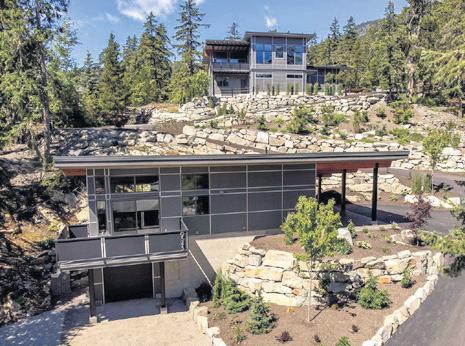

The budget also reduces some municipal services and the number of projects undertaken to cut costs and come to terms with the increasingly tight labour market. For example, the pool at the Meadow Park Sports Centre will reduce hours in 2023 due to a need for more lifeguard staff.
The 2023 project budget is $39,593,276, with $8.6 million carried over from the previous year. That is down significantly from the $45.7 million budgeted for projects last year, as the municipality aims to cut project spending by six per cent. Sewer and water system upgrades make up a significant chunk of project line items, as both systems will undergo significant improvements in 2023.
“This budget takes our inflationary reality seriously, it takes our climate reality seriously, it takes our housing reality seriously. I’m convinced that taking our social and economic realities seriously must guide the decisions that we make at this table,” Mayor Jack Crompton said.
“This is a really challenging time for our country, our province, and the world, and I think this money will be put to good use serving Whistlerites, which is something we are all interested in and passionate about.”
Officials will consider the financial plan bylaws at the upcoming Jan. 10 council meeting. Learn more about the 2023 budget at whistler.ca/budget. n

 THE ORGANIZATION WELCOMED LONGTIME LOCAL AND WASP ATHLETE OLIVIA REY TO ITS BOARD OF DIRECTORS THIS FALL
BY MEGAN LALONDE
THE ORGANIZATION WELCOMED LONGTIME LOCAL AND WASP ATHLETE OLIVIA REY TO ITS BOARD OF DIRECTORS THIS FALL
BY MEGAN LALONDE

OLIVIA REY’S first day cruising down Whistler Blackcomb’s slopes in a sit-ski was a memorable one.
It was in December 2016, just over one year after her car flipped on the Sea to Sky highway, resulting in a life-altering C5/6 spinal cord injury that left the longtime Whistler local unable to use her legs and with only limited use of her arms.
“I had a bunch of my friends and my family as well that came up, and it was very moving for a lot of people, just for me to be able to be back on the slopes, but it was also such a great experience for me … even if it was with a different ability,” she remembered.
Without the Whistler Adaptive Sports Program (WASP), that day might not have been possible.




“It was having the equipment available, but also the support in terms of the coaches and people that know what they’re doing when dealing with somebody that is in a sitski,” she explained. “It is hard. I was both a skier and snowboarder prior to my injury, and pretty strong at both of them, and sit-skiing is definitely the hardest one that I’ve tried and am still trying. It’s not something I will ever be able to do independently, I don’t think.”
Rey spends more time on Whistler’s Nordic trails these days, in the cross-country sit-ski she recently purchased with the help of a grant from the High Fives Foundation, and can often be found on summer afternoons kayaking or hitting local bike trails with Whistler Adaptive programs.
This fall, seven years after her injury and six since she became a WASP athlete, Rey officially joined the board of directors of the non-profit society she credits with helping her return to her favourite activities, and to the outdoors.
“It’s just giving back to a foundation that has done so much for me in terms of reincorporating me into sports since I’ve been here,” said Rey. “It’s been good for my mental health that I’ve had something like that here.”
Rey is “a real go-getter,” said WASP executive director Shelley Milstein. “She’s a great ambassador for the program. And you need those people who have been through the program and can really speak to the impact that it has.”


Helping locals and visitors with physical or cognitive impairments access those same benefits is exactly what Whistler Adaptive has strived to do since the organization formed in 1996. Aside from general recreation, “It’s organizations like Whistler Adaptive across the country that are the starting point for [competitive adaptive] skiing, or ski-racing and snowboarding as well,” pointed out WASP vice-president Matt Hallat, a three-time
Paralympian who also serves as para-alpine high performance director for Alpine Canada.

After three difficult years hampered by COVID-19 restrictions, Whistler Adaptive is back with a full roster of offerings this winter, from downhill skiing, snowboarding and Nordic skiing to swimming, snowshoeing, and strength and conditioning workouts.
Still, rebounding from the pandemic has “been tricky,” said Milstein. “We lost a lot of volunteer power throughout COVID, either by people leaving Whistler or just becoming disconnected with the program and moving on to something else.”



























Corresponding with that drop in capacity was a surge of participants looking to get back to the outdoor activities they love once registration reopened, Milstein continued, “but we were seriously challenged to come up with the human resources, the volunteers and the staff to meet that challenge. And we’re still really struggling with that.”
With another winter season underway, Milstein said Hallat, Rey and the rest of WASP’s staff and board are busy recruiting and training volunteers to help facilitate their programs this winter, while remaining grateful for the grants and individual donations that equally keep the organization afloat.
“We have lots of different [opportunities]. If people want to volunteer on programs, they just need to be excited about helping people access adventure and sports and recreation,” Milstein said. “We provide all the training free of charge. It’s really a pretty simple onboarding process. And if somebody is a wizard at Excel, we have space for them too.”
To learn more about the program or to get involved, reach out to info@whistleradaptive.com. n











 BY ROBERT WISLA
BY ROBERT WISLA
THE RESORT MUNICIPALITY of Whistler (RMOW) is doling out $1,239,000 to local organizations in Fee for Service (FFS) agreements in 2023.
On Dec. 6, Whistler’s mayor and council voted 6 to 1 to approve FFS agreements with five local non-profits. The groups receiving funding are: Arts Whistler ($550,000); Whistler Animal Galore ($115,000); the Whistler Museum and Archives Society ($208,000); the Whistler Off Road Cycling Association ($269,000); and the region-wide Sea to Sky Invasive Species Council ($70,000).
All the groups that received funding in previous years got a boost to account for rising inflation this year. Municipal and Regional District Tax (MRDT) and Resort Municipality Initiative (RMI) cover most of the program’s costs.
The new agreements amount to funding increases of 15 per cent for Whistler Animals Galore; eight per cent for the Whistler Off Road Cycling Association; and 6.7 per cent for the Whistler Museum. The SSISC is receiving FFS funding for the first time this year.

FFS agreements provide organizations with funding in exchange for the services




they provide to the community, which the municipality would otherwise have to pay for.
The only catch is that the RMOW requires a seat at the table at each organization for an elected representative to ensure the allocation is going toward the correct objectives. This relatively new policy took effect in the fall of 2021.

With that policy change, at least one local organization—the Whistler Chamber of Commerce—is receiving no FFS funding this year.
In previous years, the RMOW provided funding to the Chamber to administer some of its programs, such as job fairs and the Whistler Experience Program. Last year the Chamber received $120,000 in FFS funding.
Being part of the Greater Vancouver Board of Trade, allowing a member of council onto its board would create a conflict of interest for the Whistler Chamber, as it lobbies the municipal council on policies for the benefit of local businesses, explained executive director Louise Walker.
While the financial hit to the WCC is notable, Walker believes the team will be able to weather the loss of funding.
“It was disappointing to lose funding, but we have learned how to pivot over the last few years, and we will find a way to pivot again and continue to deliver this important service,” Walker said.
“There’s no denying it’s a big loss for us. We have been very fortunate to continue with some of our other sponsors like Whistler Blackcomb, and Gibbons Group have continued to sponsor the program, and we will make it work.”
Thanks to an amendment from Councillor Cathy Jewett, Arts Whistler gained an additional $30,000 in FFS funding on top of the $520,000 proposed by staff.
Jewett proposed the 6.7-per-cent increase to account for inflation, noting it is in line with
as a good reason to increase funding.
“Inflation has been a big topic on the budgets and all these other things, and coming from Arts Whistler, I know they struggle to keep staff and maintain operations as it is. So a zero-per-cent project budget is a significant backwards decision when inflation is at seven per cent,” Murl said.
“I don’t think anyone wants to see any of the organizations on this list move backwards in terms of the service they deliver, or their ability to take care of the staff, offer a living wage, proper benefits and make sure that those talented people stay in their place.”
Arts Whistler executive director Maureen Douglas welcomed the additional funding, noting that with inflation rising and more in-person arts events taking place as pandemic restrictions have eased, costs have risen precipitously.
- LOUISE WALKER
the increase the other organizations received.
While most of council agreed with this reasoning, Coun. Ralph Forsyth raised opposition to the increased funding, citing the work that has already gone into the 2023 budget, and so voted against the amendment and the FFS agreements.
Coun. Jeff Murl cited the rising inflation

“We’re pleased and grateful [for the increase]. Honestly, every dollar that comes into a not-for-profit charity is huge and contributes to the bottom line, which is sometimes a challenge to get there with a zero budget, especially right now,” Douglas said.
“We’re dealing with inflation like we haven’t seen in decades, and wages need to increase. So there’s a number of challenges, so that extra funding absolutely helps with those a little bit.” n





“There’s no denying it’s a big loss for us.”
BUILDERS IN THE RESORT Municipality of Whistler (RMOW) can look forward to more certainty, transparency and faster permitting times thanks to changes in the municipal permitting process—but they might end up paying a lot more for it than they’re used to.
On Dec. 6, Whistler’s mayor and council voted to amend the RMOW’s Land Use and Procedures Bylaw to revise permitting fees and improve processes for development variance (DVP) and development permits (DP).
The hope is that the changes will speed up permitting and improve cost recovery at municipal hall.
According to manager of development planning Melissa Laidlaw, the goal of the updated fee structure is to implement better cost recovery, create a transparent fee structure, give more certainty to applicants, and streamline permitting.
“The existing fee structure does not adequately recover the cost of all staff resources associated with application processing. We’ve only been tracking the planning department staff time in that cost recovery,” said Laidlaw.
“It doesn’t provide transparency to an applicant on the total cost upfront of what



their application will cost them for processing. It’s inefficient to administer, and the majority of the fees have remained static since 2013, and as we know, staff wages and other expenses have gone up.”
The amendment changes the fee system from an estimating model to a streamlined, all-inclusive system. The changes take into account staff time in other departments, which was not previously accounted for, and
For example, Temporary Use Permit applications, typically needed for significant events in Whistler, now come with a $3,000 flat fee if delegated and $4,700 if they require council permission to proceed. That’s up from a baseline fee of $240 (plus staff time, legal services, advertising, etc.) for delegated TUP applications and $2,400-plus for non-delegated.

Amendments to zoning bylaws or land use contracts, meanwhile, will go from a
for site inspections ($375) and property zoning inquiries ($250 per property request), while also increasing fees for title searches (from $21 to $35) and outdoor patio licences (from a base of $240-plus to $1,200).
In addition to the fee structure changes, the RMOW is also redesigning rezoning application notification signs. The new signs will include a map of the site with all the roads adjoining the development site labelled and a rendering of the proposed development for more complex projects.
The changes to the Land Use and Procedures Bylaw, which governs how permits are processed, come on the heels of amendments made earlier this year that removed some of the red tape on permit applications to improve permitting efficiency.
When that bylaw moved through its first three readings, council requested staff do a comprehensive review of all fees for planning applications and development-related services. The new bylaw update is a result of that request.
simplify processes.
The new structure replaces a complicated system that requires applicants to pay upfront application fees and additional fees for thirdparty consulting, statutory notifications and permit-filing fees.
The result is permitting fees that are, at least on the face of it, much higher and could prove a financial barrier for event producers.
base fee of $1,500-plus to one of two massive base fees: $15,000 for applications related to density changes below 465 square metres, and $30,000 for density changes above that threshold.
If a public hearing is required, tack on an extra $3,500; an extra $1,500 on top of that if it goes to Advisory Design Panel.
The bylaw also introduces some new fees,
According to Laidlaw, in many cases, the invoices associated with a project alone can take weeks to go through, resulting in slower building permit issuances—and contributing to the ongoing permitting backlog plaguing municipal hall.
The amendment received first readings at the Dec. 6 council meeting and will come back for adoption at a future meeting. n

“It doesn’t
transparency to an applicant on the total cost upfront of what their application will cost them for processing.”
- MELISSA LAIDLAW
WHISTLER-BASED creative agency, Origin, which has, over the years, helped shape and share the story of the resort to a national and international audience, has been acquired by one of the world’s leading integrated travel and hospitality marketing firms.
Kansas City-based MMGY Global announced the deal earlier this month, part of its ongoing strategy to grow its global footprint and ability to service existing and prospective clients worldwide, as well as moving further into the realms of outdoor sport, lifestyle and recreation that Origin has been known for since its founding close to 30 years ago.
“It’s really about talent, geography and the expansion of our service offerings,” said Katie Briscoe, MMGY Global’s president and incoming CEO. “We have been looking at creatively centred businesses for many years and wanted to find that right partner in the niche we specialize in, which is travel and hospitality. We’ve seen some businesses we’ve been excited about, but we love Origin and we love their focus on the outdoors and their portfolio.”
Founded by Danielle Kristmanson in 1995, the story of Origin’s success in many ways
mirrors the growth of Whistler as a resort. One of the firm’s first clients out of the gate was Whistler Mountain, and then, Whistler Blackcomb (WB), when both namesake mountain operations merged in 1997, giving Kristmanson and her small team the tall order of selling the burgeoning ski resort—and by extension, Whistler itself—to the wider world.
“It built from there. We were very small back then, but we became very tied to Whistler Blackcomb’s growth and to [former WB owner] Intrawest’s growth and a lot of those players back then,” Kristmanson said. “We rode those coattails and they took us out of Whistler. They were really responsible for exporting our expertise and talent outside of Whistler.”
Another big break for Origin came in the early 2000s, when the firm landed the entire account for both WB and Tourism Whistler.
It was not long after that Origin added Marie-Josée Legault as a partner, and expanded its presence into Montreal and Vermont. But Whistler would always remain at the core of the agency’s award-winning work, which gave it both a leg up on other firms in the outdoor recreation space and an enticing carrot to dangle in front of its employees.
“In retrospect, I think for the longest time we saw Whistler as a bit of a disadvantage to our competitiveness. We thought it felt kind of
small-time. In actuality, there are a lot of really smart and talented creative strategists that want to live the lifestyle we can in Whistler and don’t want to sacrifice their career growth at the same time,” explained Kristmanson. “A really unique working environment and really unique creative opportunities specific to the outdoors meant that we got the best of the best. There are not many agencies like us where you can live an outdoor lifestyle and work on brands that align with your passions. It really worked in our advantage. I would say it was almost accidental.”
Known for its knack for visual storytelling, Origin has worked with some of the biggest outdoor brands and organizations in the world, including L.L. Bean, MEC, Vail Resorts, lululemon, and Smartwool.

But for Kristmanson’s money, it’s two memorable campaigns for WB closer to home that exemplify Origin’s storytelling acumen: one, called Embedded, saw filmmaker and freestyle skiing pioneer Mike Douglas shack up in the patrol hut at the top of Peak Chair for several chilly days leading up to opening day, documenting all the last-minute preparations to get the lifts up and running. The other, called Magnetic, was launched in 2017 to mark WB’s 50th anniversary and resulted in Origin’s first feature-length documentary, of
the same name, that brought back some of the most notable figures from the ski resort’s halfcentury of operations.
“The work we did with that was really groundbreaking for the industry. Never before or since has there been a ski film filmed and produced entirely within the ski area,” Kristmanson said. “That night in the conference centre when we premiered that film … was just such an amazing moment where we felt like we really gave something back to the community.”
Under MMGY’s umbrella, Origin will become known as MMGY Origin and will continue to operate as its own independent brand, with all 35 employees retained. Legault will now serve as partner and managing director and Kristmanson as partner and creative director, and both will work with MMGY Global’s senior management team to grow the agency’s capabilities and extend its services across other areas of the company. As an agency exclusively focused on creative, Kristmanson said in the past Origin would sometimes miss out on bids, because they don’t offer marketing and media-buying services.
“This will change that for us,” Kristmanson said. “I don’t think [our clients] will see much difference except an enhanced roster of services we can bring to the table.” n



LAST MONTH, Whistler’s fire department was in good (but smaller) hands as four students from Whistler’s local elementary schools took the reins of the Whistler Fire Rescue Service (WFRS) as part of the annual Fire Chief for a Day program.
On Dec. 2, Talia Mitchell Pineda, Miia Allars, Graeme Campbell and Jericho Luat got to experience what it is like to be Whistler’s fire chief, at least for the day, after they won a draw during Fire Prevention Week.
The students’ day started with WFRS picking them up from school and taking them to the fire station, where they received a full tour of the department.
While at the fire hall, the students learned how to use firefighting equipment, water hoses, ropes, and even day-to-day administrative work.
Yet the day’s highlight was an unforgettable helicopter tour of Whistler Blackcomb, the Callaghan Valley, and Black Tusk, sponsored by Blackcomb Helicopters. The tour even stopped at Rainbow Glacier, where the students got to play with some of the glacial snow.

The helicopter tour was the coolest part of the day for Grade 6 student Mitchell
Pineda, who had never been in a helicopter, let alone one on top of a glacier. “It was amazing,” she said.
“I was a bit nervous when we started to fly, and the views were very beautiful, and it was freezing cold when we landed on Rainbow Glacier. I really enjoyed the day. If I had the chance to do it again, I would definitely do it again.”
The students got a perfect bluebird day for their flight, and though some of them were nervous as they took off, the feeling of unease settled down quickly. Following the flight, the










students were given a free lunch at the Old Spaghetti Factory before making their way back to school at the end of the day.
The Fire Chief for a Day program is part of the annual Fire Prevention Week, which takes place from Oct. 9 to 15 and marked its hundredth year in 2022. During the week, students learn about fire prevention and the importance of planning an escape route with their families.
WFRS Chief Thomas Doherty believes these programs are vital for educating the next generation. “I think it’s important,
because anytime we get an opportunity to educate anybody in public, regardless of their age, about fire safety and the things they could do to have a positive outcome, I think that’s always a benefit,” Doherty said.
“So we start at the young age, they take that information home to the parents, and they discuss with the parents about fire safety and come up with their plans of escape and making sure their smoke alarms are working and functioning correctly.

“So anytime there’s an opportunity, we need to take advantage of that opportunity and ensure that information is getting out to everybody.”


Doherty hopes the kids will keep the memories of the experience with them for the rest of their lives, and when it comes to choosing their futures, they think about firefighting as a career.
“It’s a good career and something that will stick in their mind for years. When you add in the benefits of our sponsorships from Blackcomb Helicopters and the Old Spaghetti Factory, those memories will be with them forever,” Doherty said.


“When they get older, and they are reaching that time where they’re ending high school and going into college or university, and those decisions need to be made about professions, we’re hoping that maybe firefighting comes to mind for them.” n

WITH A HANDFUL of significant housing projects in the planning stages or under construction, a rapidly changing demographic, and rising demand for inter-regional trail and bus connections, the Squamish-Lillooet Regional District (SLRD) has a lot on its plate for the coming year.
The SLRD Regional Growth Strategy (RGS) helps guide how the regional district takes on these challenges and serves as a broad policy framework that sets the direction of population growth in the SLRD for all areas except Area A.
At the Dec. 14 SLRD board meeting, directors listened to an annual update on the progress of the RGS’ 11 goals, which provided a snapshot of the accomplishments met in 2022—and what will guide the regional district going into 2023.
“It’s sort of a high-level, directional planning document that takes into account the Official Community Plans of each municipality and then sets the boundaries for where growth can go within our region,” SLRD chair Jen Ford said.
“It’s kind of a smart way of saying Squamish won’t grow beyond this number of people without agreement from the neighbouring communities and what that looks like, so it’s a very intentional first look at growth.”
Addressing the dire housing crisis in the region is one of the regional district’s top priorities, and one that the SLRD has made a fair bit of progress on in 2022.
At the end of November, an amendment to the Official Community Plans in three of the four district areas added a suite of new guidelines and practices to guide the future construction of affordable housing in the region. The amendment includes new
homes will require one covenanted long-term rental suite, while six lots will be offered for below-market rates. A change that could allow long-term rental suites in addition to carriage homes in the neighbourhood is also currently under consideration. If implemented, it could lead to increased density and more than 100 new bed units in the community.
In Mount Currie, the Lil’wat Mainstreet Development, which recently passed third reading at the SLRD, will add 53 affordable housing

In anticipation of such a service expansion, the SLRD requires certain new developments to include infrastructure such as new bus stops.
While the region waits for a regional transit system, significant expansions to the regional trail system are moving forward over the next two years. Funding for upgrades to the Friendship Trail between Mount Currie and Pemberton was approved in 2022, and will start construction in 2023.
The missing piece of the Sea to Sky Trail from Gord’s Garden to Nairn Falls will start construction in 2023, completing the route from Whistler to Pemberton. The SLRD has also secured a third of the funding required for the section of trail between Cheakamus Canyon and Chance Creek, with construction estimated to start in 2024.
Ford believes the regional district has made the most progress over the last year on affordable housing and emergency preparedness, particularly with new wildfire mitigation measures in Area C standing out as a notable accomplishment.
zoning regulations requiring all new multiunit developments to have a minimum of 15 per cent affordable housing.
With this goal in mind, the SLRD is also requiring a number of proposed developments to include more affordable housing, including expansions in Furry Creek, Britannia Beach, WedgeWoods and the Mount Currie commercial area.
In the case of the proposed Furry Creek expansion, the developer must provide 60 affordable rentals and 60 affordable ownership units, with these units covenanted for employees.
In the WedgeWoods Phase 7 expansion, new
units along with six commercial developments in the heart of the community. Providing housing for between 100 and 120 people, it is expected the project will drastically help alleviate some of the housing challenges in the community.
The SLRD is also hoping to leverage new developments to tackle another one of the goals set out in the RGS: improved transportation links. The SLRD continues to advocate for the provincial government to create a regional transit system connecting Furry Creek to Mount Currie.
“I would say the work we’ve done on wildfire in Area C has been really important. It’s taken seriously the B.C. FireSmart funding that we’ve received, and that’s been throughout the region. Each area does it differently, but what that looks like on a regional scale really supports each neighbourhood and each community,” Ford said.
“The affordable housing piece is also really important. We’re taking the amount of pressure seriously in the neighbourhoods, communities, and unincorporated areas, because people certainly want to see a lot of new housing built. We’re feeling the pressure, and so we’re taking that seriously.” n
BUILD IT Building new housing will be a top priority at theSquamish-Lillooet Regional District this
year.PHOTO BY ROBERT WISLA
“[P]eople certainly want to see a lot of new housing built. We’re feeling the pressure, and so we’re taking that seriously.”
- JEN FORD
17th-20th, 2023
Kindergarten, French Immersion Programs, and All New Students to the District

School District No.48 (SD48) is welcoming registrations for the upcoming 2023-2024 school year starting January 17th, 2023, at 8:00 am and ending January 20th, 2023, at 4:00 pm.

There will be two key steps:

Step One: Parents and Guardians will be asked to fill out an online webform through the school district website This will include basic contact information such as name, email address, physical address and student name and grade. Parents will be walked through the process within the webform to either register as a new student to the district, or a current student registering for French Immersion
Step Two: Make an appointment to complete your registration at your English catchment school by booking online through our district website, or by contacting the school directly.
Note - French Immersion registrations must be completed through your English catchment school, not the French catchment school. For Cultural Journeys and Learning Expeditions, complete your registration directly at St'a7mes School.
Please Note the Following Important Information:

The order in which registrations and/or transfer requests are received have implications for placement in a program or school where space and seats may be limited. A time and date stamp will be provided for your registration with the completion of the webform This time and date stamp will be valid for 10 business days and will be confirmed at the completion of your registration during your school appointment.

Parents and guardians who miss the availability of the webform can register by contacting their English catchment school to book an appointment The completion of the registration during this appointment will serve as the time and date stamp.
More detailed information on the registration process and SD48 program information can be found on our District Website: www.sd48seatosky.org or contact your English catchment school principal for further assistance. We encourage parents and guardians to register as soon as possible to help schools plan for September 2023.

In accordance with section 24 of the Community Charter, the Resor t Municipality of Whistler (RMOW) hereby gives notice that:
The RMOW intends to provide assistance through par tnering agreements for 2023 in accordance with the Council Policy A-39 - Fee for Service to:
• Whistler Ar ts Council (dba Ar ts Whistler) up to the amount of $550,000 to operate Maury Young Ar ts Centre and develop, produce and promote ar ts programming in Whistler;

• Sea to Sky Invasive Species Council up to the amount of $70,000 to provid e invasive species exper tise, program development, training and education in Whistler;
• Whistler Animals Galore Society up to the amount of $115,000 to operate an animal shelter in Whistler;
• Whistler Museum and Archives Society up to the amount of $208,000 to operate the Whistler Museum; and
• Whistler Off-Road Cycling Association up to the amount of $269,000 to maintain the existing off-road trail network within Whistler (together the FFS Recipients)
On December 6, 2022 Council passed a resolution approving the above-listed funding amounts to the FFS Recipients at a Regular Meeting of Council. All of the FFS Recipients are providing impor tant services to the Whistler community and Council has determined that the assistance being provided by the RMOW fur thers the goals of the Whistler community as identified in Whistler’s Official Community Plan. All funding under these agreements will be paid in 2023 and is dependent on the FFS Recipients satisfying milestones throughout 2023.
THE FOLLOWING IS adapted from the prologue to the 25th anniversary edition of The Sacred Balance: Rediscovering Our Place in Nature (Greystone Books), released in December.
As host of the long-running television series The Nature of Things, I learned of the battle over clearcut logging on Haida Gwaii, off the coast of British Columbia, in the 1970s. For thousands of years, the islands have
me that vital need to be connected to the land. They refer to Earth as their Mother, who they say gives birth to us. Moreover, skin enfolds our bodies but does not define our limits because water, gases and heat dissipating from our bodies radiate outward, joining us to the world around us. What I have learned is a perspective that we are an inseparable part of a community of organisms that are our kin.
BY DAVID SUZUKI PaulineLysaght Resor t Municipality of Whistler Corporate Officer
been home to the Haida. Forest companies had been denuding much of the islands by clearcut logging, which had generated growing opposition.
In the early 1980s, I flew to Haida Gwaii to interview loggers, forestry officials, government bureaucrats, environmentalists and Indigenous people. One of the people I interviewed was a young Haida artist named Guujaaw who had led the opposition to logging for years.
Unemployment was high in Haida communities, and logging generated desperately needed jobs. So I asked Guujaaw why he opposed the logging. He answered, “Our people have determined that Windy Bay and other areas must be left in their natural condition so that we can keep our identity and pass it on to following generations. The forests, those oceans, are what keep us as Haida people today.”
With this realization, I also saw that environmentalists like me had been framing the issue improperly. There is no environment “out there” that is separate from us. We can’t manage our impact on the environment if we are our surroundings. Indigenous people are absolutely correct: we are born of the Earth and constructed from the four sacred elements of earth, air, fire and water. (Hindus add a fifth element, space.)
Once I had finally understood the truth of these ancient wisdoms, I also realized that we are intimately fused to our surroundings and the notion of separateness or isolation is an illusion. Through reading I came to understand that science reaffirms the profundity of these ancient truths over and over again.
We are no more removed from nature than any other creature, even in the midst of a large city. Our animal nature dictates our essential needs: clean air, clean water, clean soil, clean energy. This led me to another insight, that these four “sacred elements” are created, cleansed and renewed by the web of life itself. If there is to be a fifth sacred element, it is biodiversity itself. And whatever we do to these elements, we do directly to ourselves.
At the most basic level, we require the
When I asked him what would happen if the logging continued and the trees were cleared, he answered simply, “If they’re logged off, we’ll probably end up the same as everyone else, I guess.”
It was a simple statement whose implications escaped me at the time. But on reflection, I realized that he had given me a glimpse into a profoundly different way of seeing the world. Guujaaw’s statement suggested that for his people, the trees, the birds, the fish, the water and wind are all parts of Haida identity.
Ever since that interview, I have been a student learning from encounters with Indigenous Peoples in many parts of the world. From Japan to Australia, Papua New Guinea, Borneo, the Kalahari, the Amazon and the Arctic, Indigenous people have expressed to
five sacred elements to live rich, full lives. But when those basic necessities are met, a new set of needs arises. We are social animals, and the most profound force shaping our humanity is love. And when that vital social requirement is fulfilled, then a new level of spiritual needs arises as an urgent priority. This is how I made the fundamental re-examination of our relationship with Earth that led to The Sacred Balance
The challenge of this millennium is to recognize what we need to live rich, rewarding lives without undermining the very elements that ensure them.
Suzuki is a scientist, broadcaster, author and co-founder of the David Suzuki Foundation. ■

David
“Our people have determined that Windy Bay and other areas must be left in their natural condition...”
- GUUJAAW
EVERYONE LOVES complaining about other drivers when they’re driving. It’s often vocalized while stereotyping the cars or licence plates that give away the driver’s home region or social status. B.C. and Alberta drivers always yell at each other’s plates on
BY VINCE SHULEYthe roads, judgment cast long before anything dangerous or discourteous transpires. B.C. and Washington drivers probably do the same. Raised pickup trucks love rumbling past slow-moving compacts, and Teslas seem to be experts at sketchy highway overtaking. And for some reason, Audis give drivers the entitlement to drive like arseholes.
Generalizations, yes. True arsehole drivers transcend vehicle makes, models or types. Some like to speed recklessly and cross double lines for a dramatic overtaking manoeuvre (I’ve seen this happen on Whistler’s stretch of Highway 99 with oncoming traffic). Where I grew up in the Australian state of Queensland, few drivers risk getting speeding tickets—on account of all the automated cameras and the fines they generate—and settle for aggressive tailgating instead. On the Sea to Sky Highway,
drivers risk the lives of others (and their own) by taking a trip to Whistler in a snowstorm with all-season tires on a two-wheel-drive car.

The weeks leading up to Christmas (and the days after) produced some of the worst driving conditions Canadians had seen in their lifetimes. It got to a point where it didn’t matter what vehicle or tires you had—if you risked driving, the chances of you colliding with another car or putting your car in the ditch went up exponentially. Shoppers coming out of Fresh Street Market were lucky to walk to their cars without going ass over tea
vigilance against treacherous road conditions in the winter.
I didn’t learn to drive in the snow and ice of Canadian winters. It was an acquired skill and confidence that took years to train, and even now I’ll take every opportunity to avoid the Sea to Sky Highway when it’s sketchy. The way many foreigners initiate their winter driving journeys is by purchasing a vehicle with all-wheel drive. I owned a 2001 Hyundai Santa Fe for a few years, and while it was a horrendous vehicle to maintain, I rarely got stuck in the snow or lost traction. That was
needed to acknowledge when I wasn’t going to make it up a steep back street or driveway. I learned afterwards that just because tires have a snowflake on them and a 97 rating in the Canadian Tire brochure, it doesn’t mean they are good for extended winter driving in ski towns. A local mechanic told me that cheap rubber hardens over time—a lot more than the rubber found on good quality tires— so while you might have 60,000 kilometres of wear left, those bargain winters you got on sale aren’t much chop after a couple of seasons. I urge any rookie winter drivers who commute on our highway to do their research and spend the extra money on quality rubber. After spinning out one too many times on Blueberry Hill, I ended up upgrading my Matrix to Maxxis NP-5 studded winter tires. Yeah, they’re obnoxiously loud, but I haven’t gotten stuck or had to turn around from an icy hill since.
kettle. If you had no choice but to drive that day, I sincerely hope you made it home safely.
also partly due to the (decent quality) Pirelli Scorpion winter tires the car came with.
My partner and I also now own a 4WD Tacoma with the typical offroad upgrade to BF Goodrich KO2 all-season tires. That vehicle does just fine in the snow, but weight in the rear is advantageous when the roads get slippery. Good thing there’s a snowmobile we can load in the back for the pow days.
PHOTO BY COLORS HUNTER - CHASSEUR DE COULEURS /Barring a once-in-a-generation snowstorm followed by a freezing rainstorm followed by more snow and rain at the perfect temperature for ice buildup, driving in the winter on B.C.’s South Coast is generally not that bad. We get blizzards, sure, and it sucks when you have to get home in the dark from Squamish in a 2WD compact with 10 centimetres yet to be plowed. At least we don’t get nearly as many of the black-ice hazards that sneak up on unsuspecting drivers in the colder parts of Canada. But we must still maintain constant
After multiple winter road trips across the province and many drives up and down the Sea to Sky, I got rid of the Santa Fe and bought my now trusty Toyota Matrix. I wish it was the AWD version—which is quite legendary and tough to find these days—but I reluctantly went to 2WD and hoped that my confidence with winter driving would make up for the lack of AWD traction. And it did, for the most part, but with the cheap winter tires I put on it, I’d have to carry a snow shovel in the back in case I got stuck on a powder day. I also
You can have all the right tools for winter driving, but unless you have the wisdom to slow down and drive defensively in horrible conditions, no equipment will help you. The risks are rarely worth saving a few minutes in commute time. Save the sliding for the slopes.
Vince Shuley’s holiday travel plans got cancelled, and he’s OK with that. For questions, comments or suggestions for The Outsider, email vince.shuley@gmail.com or Instagram @whis_vince. ■




What a difference 12 months can make.
As 2021 drew to a close, Whistler and the wider world around it were in the midst of a furious Omicron surge, with COVID-19 restrictions re-emerging and no real end to the pandemic in sight.




Where do we sit a year later?
The virus is still out there, of course, we’re just no longer assigning it the gravity we did in 2020 and 2021. Some are relieved about that. Others are not. Let’s leave it at that, for now.
In fact, the headlines that dominated 2022 in Whistler were almost completely bereft of the COVID factor—a welcome shift after two years in which every word was seemingly penned in part by the pandemic.
It was a year of big-picture discussions, of local drama—of triumph, tragedy and tradition.
Read on to relive the stories that defined Whistler and Pemberton in 2022.
According to Pique readers, there were two stories that dominated Whistler’s attention more than any other in 2022: the brazen, broad-daylight double homicide in Whistler Village on July 24, and the transit strike that kept local buses off the road for more than four months.
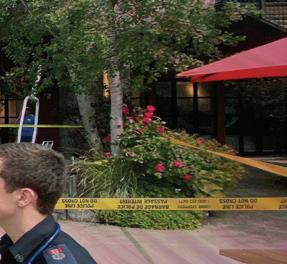


But aside from those big, attention-grabbing headlines, the year was once again characterized by big questions around growth management.
Namely, how will Whistler deal with potential “unconstrained growth?”
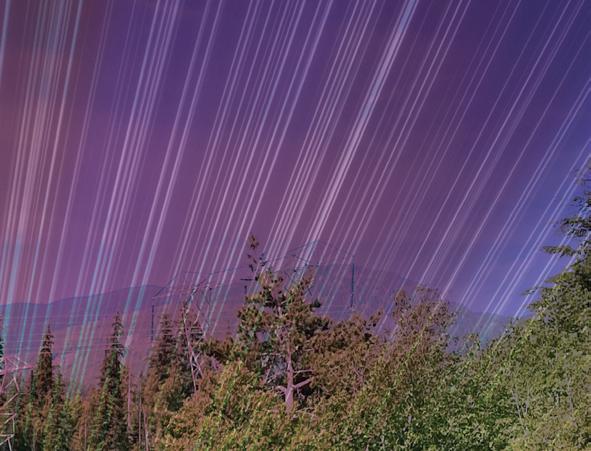
A report to council in December 2021 detailed the possible growth implications if Whistler does not act, and the topic carried on through much of 2022.

Through its Balance Model Initiative, the Resort Municipality of Whistler (RMOW) hopes to guide the resort to its preferred future (whatever stakeholders ultimately deem that to be). A final report complete with recommendations for action is expected in 2023.

And it won’t come a minute too soon: populations in Whistler, Pemberton and the Sea to Sky are all on the rise, and user numbers on the popular River of Golden Dreams have doubled since 2015, we learned last year—so the pressure is very real.

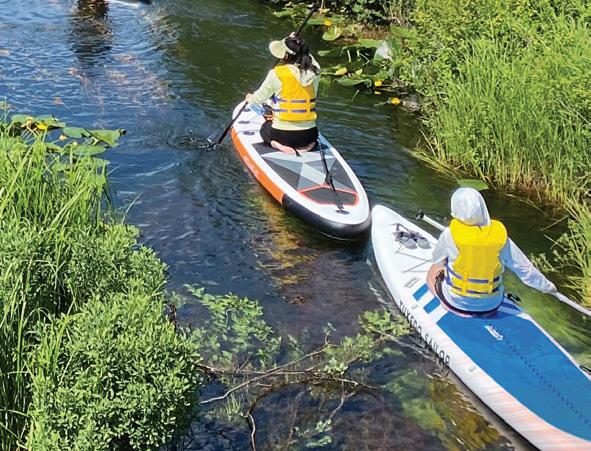


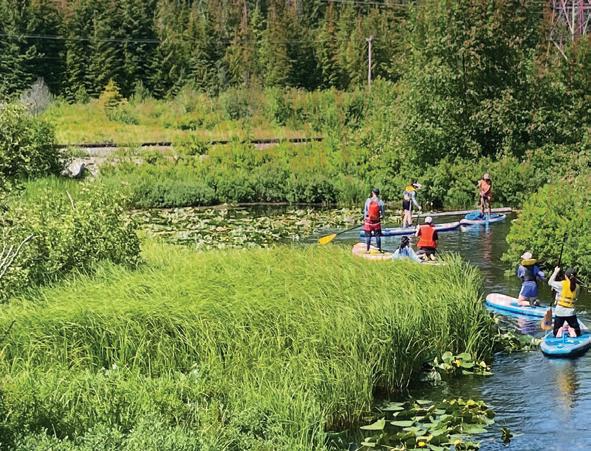

Adding to the strain is the perennial lack of housing, more pronounced now than ever before.
A provincially mandated housing needs report completed in the spring found that more than 90 per cent of Whistlerites can’t afford the average market property.

“We need to build a lot of housing, but we need to also understand the community effects of building more housing, and using the housing we have to its maximum efficiency is very important,” said Councillor Jen Ford, at a council meeting in July.

“So I think that whatever creative solutions come, everything is on the table as far as how we can be efficient in using not only the employee housing that we have in town but all of the housing.”
It was another busy year for council and RMOW staff, with some big projects advanced and progress made on several fronts— even if plenty of work remains for 2023 and beyond.
On the housing front, work on Cheakamus Crossing Phase 2 again took precedent, with 100 new for-purchase apartments
in two buildings delivered (and with more in the early planning stages for the new year).

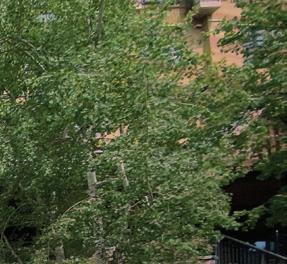
Council also approved new developments in White Gold, Nordic and at Nita Lake—all of which proved controversial with nearby residents—as well as a new 200-bed staff housing building at the base of Blackcomb Mountain.
More employee housing is also included in proposals for the Northlands rezoning north of Whistler Village—another big item on the workplan in 2022 that will carry over to 2023.
The “enhanced rezoning” process in place for the project will determine what gets built on the last undeveloped piece of land in the village.

Council’s most favourable decision of 2022, according to Pique readers, was throwing its support behind the Indigenousled bid for the 2030 Olympic Games—which ultimately fizzled out when the province announced it would not support the $4-billion effort.
Other council initiatives undertaken in 2022 included (but were not limited to): an update to the municipal Green Building Policy; a new Community Wildfire Resiliency Plan; cancelling the divisive White Gold utilities undergrounding project; and advancing a cannabis retail policy at long last.

In June, documents obtained under a freedom-ofinformation request revealed the RMOW spent $28,000 suing Pique Newsmagazine over its 2021 coverage of a ransomware attack that crippled services at municipal hall and jeopardized the personal information of thousands.
“It was an incredibly difficult and uncomfortable decision to make,” said Whistler Mayor Jack Crompton of the decision
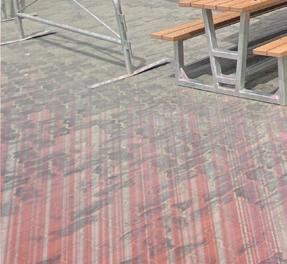

to sue. “Ultimately the protection of staff’s personal and private information guided the decision at the time. It was an expense we felt we had to incur.”
In late November, Whistler’s newly elected council floated its first budget—featuring an 8.3-per-cent tax hike (the largest in recent memory).
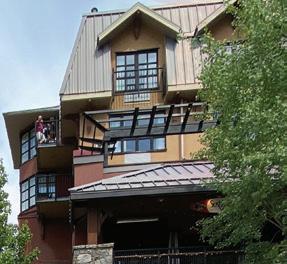
In October, after a largely uneventful election campaign, Whistlerites opted for experience, re-electing all five incumbents to council.
As such, Mayor Jack Crompton is joined by Councillors Cathy Jewett, Arthur De Jong, Jen Ford and Ralph Forsyth, along with newcomers Jessie Morden and Jeff Murl, for the 2022-2026 term.

“I’m so excited to get to work with these people,” Crompton said shortly after the results were announced on election night. “I think the final vote tally really demonstrates the community’s confidence in these six people. They are thoughtful, hardworking and extremely connected to the community.”
Voter turnout on an unseasonably warm Saturday was 34.98 per cent, up from 32 per cent in 2018 and 27 per cent in 2014, but still below Whistler’s record high of 55 per cent in the resort’s landmark 2011 election, still the only time Whistlerites cleaned slate with an entirely new mayor and council.
A hotbed of crime, Whistler is not.
Most weeks, the police blotter is full of the kinds of relatively minor offences you might expect in a tourism town: high-end bike thefts, Craigslist housing scams, impaired driving, maybe the odd drunken fistfight.
So when a crime happens here that goes against the grain, it tends to stand out. That’s exactly what happened on a bright and sunny Sunday this past July, when a gangland shooting in the middle of the village left two dead and effectively pierced the Whistler bubble that has for so long protected the resort from this kind of organized violence.
By now, you’ve probably heard the details: on July 24, two Surrey gunmen opened fire outside the Sundial Hotel in what investigators called a targeted hit, killing Meninder Dhaliwal, a prominent member of the Lower Mainland-based Brothers Keepers gang, and a friend, Satindera Gill, who is not linked to the group.
Facing first-degree murder charges are 24-year-old Gursimran Sahota, and 20-year-old Tanvir Khakh.
It was another in a string of gangland shootings that rocked the Lower Mainland in 2022, and was reportedly a retaliation for the May 2021 killing of Karman Grewal, a member of the rival United Nations gang who was shot dead outside of the Vancouver International Airport’s departures terminal that Mother’s Day. Grewal’s murder—which remains unsolved—happened less than a month after Dhaliwal’s older brother Harb was slain outside of a Coal Harbour restaurant in what appeared to be a targeted hit.
Even by the standards of the B.C. gang wars that have escalated since the Brothers Keepers entered the fray some five years ago, the July shooting was incredibly brazen, coming as it did on a busy weekend in a village crammed with visitors, just steps from the gondola. It’s proof of both how fraught B.C.’s gang situation has become in recent years, and just how well insulated Whistler tends to be from the forms of violent crime more common in urban areas. What is less certain, however, is what lingering residue such wanton violence will have on the eyewitnesses and bystanders who were on the scene of the killing and whose idyllic Whistler Sunday was shattered in an instant.
It is, if nothing else, a stark reminder that as much as we might view Whistler as an escapist’s haven, a place to forget the ills of the outside world, the world will sometimes find a way in, for better or worse.


A local man filed a civil suit in B.C. Supreme Court this spring, alleging Whistler RCMP officers used excessive force and were negligent in his arrest the prior summer, which led to a broken wrist and other injuries.
According to the May 9 filing, the individual had an interaction with Whistler RCMP members on or about Aug. 25, 2021 after police responded to a 911 call alleging a man had uttered threats to a woman during a domestic incident.


The man claimed officers’ conduct during the arrest was “excessive” and constituted “assault and battery,” with police “aggressively taking hold” of him; “body checking” him into a vehicle; “forcefully” taking him to the ground and putting their weight on his back and legs; stepping on his wrist(s); striking him; and “aggressively” pulling his arms behind his back.
The suit came five months after the Independent Investigation of B.C., the province’s civilian police watchdog, released the results of its own investigation into the arrest, which ultimately cleared officers of wrongdoing.
In his report, the IIO’s chief civilian director Ronald J. MacDonald noted that the suspect “became non-compliant when he was told he was being detained because of the [woman’s] complaint to police about him.” One officer then reportedly took the suspect’s arm behind his back and applied a handcuff to his left wrist, before all three officers found themselves unable to “complete the cuffing process because

they could not control [the man’s] right arm.”
In his written statement, the man said he was having a panic attack at the time and said that he “began to have a full body tremor” as a result of multiple sclerosis. He described a condition in which his “entire body turned very static or rigid,” unable to move his arms or legs. He noted that his hands were “shaking uncontrollably” and said “it can be quite violent looking.” He goes on to say one of the officers tried to “tackle” him to the ground, and said he was initially unable to get down on the ground because of his disability.
The officers’ statements described the suspect as variously “pulling away,” “twisting” and “spinning,” with the subject officer characterizing him as an “active resister,” and another officer calling his behaviour “assaultive.”
The plaintiff’s injuries were further aggravated, the suit said, due to the officers’ failure to obtain medical attention. The man is seeking general, special, aggravated and punitive damages.
None of the above allegations have been proven in court.
Whistler police were led to a literal truck-full of stolen credit cards last May, after two suspects attempted to buy a pricy mountain bike from a village store with one of the cards. On May 23, Mounties got a call from an employee of a Main


It wasn’t all doom and gloom for the Sea to Sky last year, however. After the Spud Valley Nordic Association (SVNA) had its equipment trailer stolen containing thousands of dollars of gear, the community of Pemberton banded together to help the club replace the stolen items.
In just a few short weeks since the theft at the Nairn Falls campground parking lot, Pembertonians raised more than $12,000 to go towards new gear. While most of the donations came from an online fundraiser, there were also scores of small, anonymous donations from community members to go along with several big-ticket donations, like $2,000 from the Pemberton Valley Supermarket and another $1,000 from the Pemberton and District Chamber of Commerce.
Others found different ways to give back, like Marty and Andrea van Loon, who raised $750 by opening their Pemberton Valley Farms property to cross-country skiers for a minimum $5 donation to the club.
“It’s just unbelievable the support we’ve had,” said SVNA chairperson Franz Los at the time. “There’s so many anonymous donations. So I don’t know who they are, but they probably would have some connection to the club some way. So it is just incredibly, incredibly generous.”
Street retail store, who reported that a man and woman had just attempted to buy the bike with fraudulent credit cards. Officers caught up with the couple a short time later at another village store, where they were trying to make another fraudulent purchase. Further investigation determined the couple had fraudulently booked a hotel room, where they found various stolen and altered bank cards, credit cards, identification, and even a stolen drone. Police also learned the pair had failed to return a rented U-Haul on time several weeks prior, and inside the vehicle they found more credit cards, altered gift cards, and a credit card embosser that was likely used to make the fraudulent cards used in Whistler, police said.


In August, Pemberton’s Roger Molinaro was sentenced to five and a half years in jail in relation to the sexual assault of two minors over a period of years, closing the chapter on a harrowing case that rocked the small community.
The 52-year-old was found guilty on several charges in November 2021 related to the abuse of the minors, who were close family friends, over a period of three years in the case of one victim, and six years in the case of the other. The victims, whose identities are protected by a publication ban, were between the ages of nine and 12 or 13, and six and 12, respectively, in the periods in which the abuse took place.
Molinaro pled not guilty and denied any wrongdoing throughout the trial, which began in June 2021. Both survivors took to the stand in the trial to share powerful victim impact statements with the court, detailing the pain and betrayal they felt from a close family friend who had been an integral part of their childhoods growing up.
The story of a Whistler woman who was missing for weeks last summer came to a tragic end in September.
Last seen Aug. 23 when she told friends she was going for a walk, 29-year-old Maple Ridge native Clorrica Riggs was missing for more than a month after her car was found parked at the trailhead to Rainbow Lake.
Then, on Sept. 25, the Whistler Blackcomb employee’s body was discovered in the area by an off-duty police officer out for a morning hike.
Known for her warm demeanour and a smile that “could light up a room,” Riggs was an avid traveller who had just moved to Whistler months prior, forming fast but deep connections with her co-workers.

“She touched a lot of people’s hearts in Whistler,” said her older brother Colin at the time. “Anybody she met, that she worked with ... really looked at her like a big sister, because they could confide in her. She meant a lot to a lot of people, because a lot of people respected her values, her opinions and different ways of looking at [problems].”
The largest known fine handed out under B.C.’s Wildlife Act was significantly reduced in December, after part-time Whistlerite Zuzana Stevikova’s successful appeal in a landmark bearfeeding case in B.C.’s Supreme Court.
The adventure school teacher was initially fined $60,000 in the fall for her role in feeding a group of black bears from the backyard of her Kadenwood home. The sow and two cubs were eventually killed by the Conservation Officer Service (COS) in


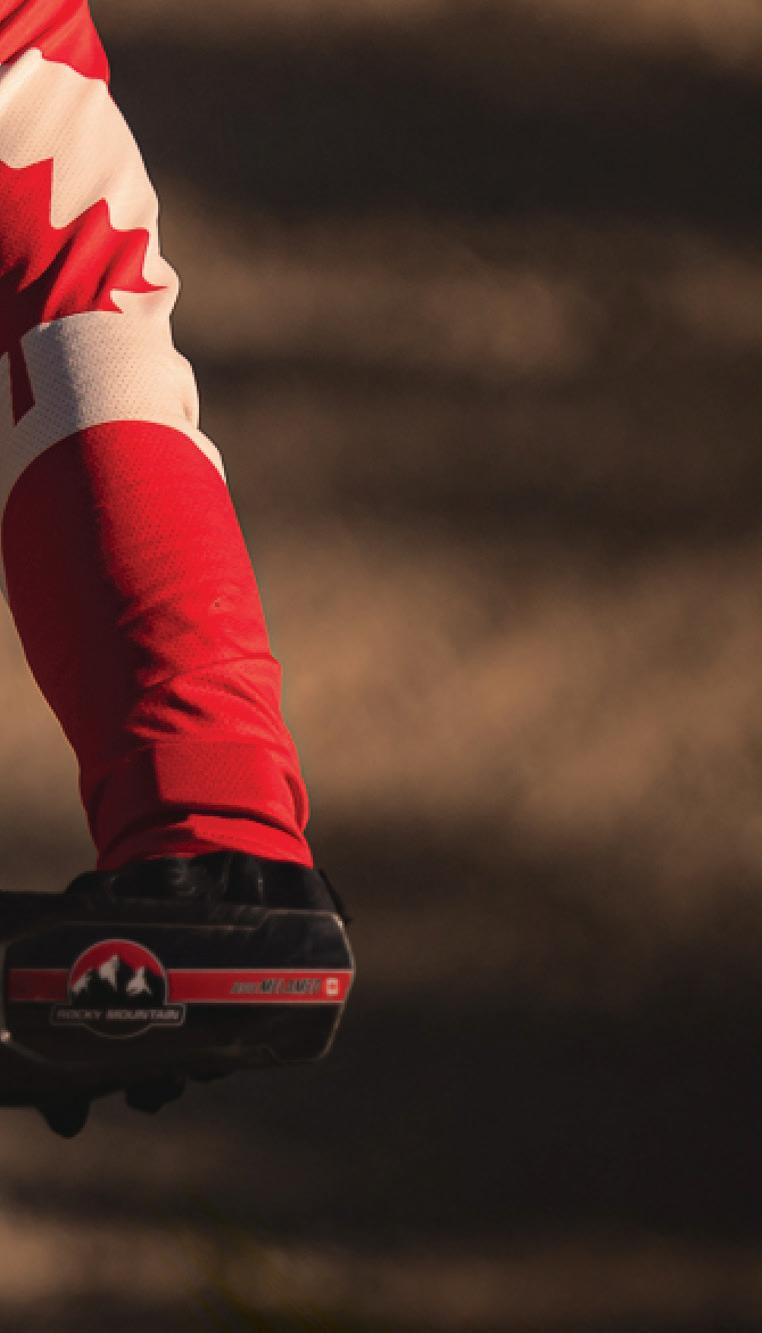


September 2018 after displaying “very troubling” behaviour on the scene, the agency said at the time.
In the end, her fine was reduced to $10,500, almost identical to the amount originally recommended in the Crown and defence’s joint submission.
The investigation was launched in July 2018 after the COS received an anonymous complaint claiming that residents of the neighbourhood had been deliberately feeding bears “for a considerable amount of time.”
Ultimately, the appeal court found that the steep fine did not align with penalties handed down for similar offences in the past.

In striking down the earlier sentence, Justice J. Miriam Gropper said the sentencing judge failed to properly apply the necessary principles from the applicable case law, and “made findings of fact which were not supported by the agreed statement of facts, would be difficult for the Crown to prove, or were not based on evidence but rather her own judicial notice. She then fashioned a sentence based on her extrapolation of the facts before her.”
Gropper also pointed out “a lack of direct evidence about whether the bears that were euthanized were fed by Ms. Stevikova,” adding that “witnesses were vague and potentially unavailable.”
Furthermore, while the Crown pointed out that the evidence showed Stevikova’s bear-feeding was likely limited to three or four days, sentencing judge Lindsay Smith considered her actions “deliberate and planned and that she repeated the offending behaviour throughout the summer of 2018,” the court documents read.
The “overwhelming theme” in the reasons for Smith’s initial judgement, Gropper wrote, was “the foreseeability of the bears being euthanized as a result of Ms. Stevikova’s
actions,” particularly given the signage and messaging found around Whistler advising that “a fed bear is a dead bear.”
The Crown’s submissions, however, made clear that taking judicial notice of this messaging was wrong because the death of the bears “is not necessarily always the outcome of COS intervention.”
Following the appeal, the majority of Stevikova’s reduced fine—$9,500—will go to B.C.’s Habitat Conservation Trust Foundation. She had also previously donated $5,000 to the Get Bear Smart Society shortly before court proceedings began.
Although many are cynical about the Olympic Games for varying political, cultural and economic reasons, there’s no denying the power they have to unite people, elevating relatively unheralded sports and stories into the public eye with moving displays of resilience and camaraderie. In February of this year, Sea to Sky locals joined many others in living out those traits in Beijing.
The Whistler area has churned out Olympians at an impressive per-capita rate, and to do them all justice would require far more space than is available here. We could talk about battle-tested veterans like luger Reid Watts, snowboarder Derek Livingston and freestyle skier Simon d’Artois, who returned to the Games in 2022 after previous kicks at the can. Or we could talk about intriguing newcomers like luger Trinity
Ellis, ski racer Brodie Seger and snowboarder Jasmine Baird, who sought to distinguish themselves at their first Olympic Games. We could even talk about those from decorated families like ski racer Broderick Thompson and snowboarder Darcy Sharpe, looking to carve out their own Olympic legacies after their older sisters did it first.


Any of these would be worthwhile stories to tell, but for now, let us focus on three athletes who conquered adversity in true Olympian fashion to bring Whistler onto the podium.
We’ll start with Jack Crawford, the 25-year-old alpine skier who moved from Thornbury, Ont. to compete with the Whistler Mountain Ski Club. Crawford and his teammates touched down in Beijing with a daunting challenge ahead of them: to break up perennial European dominance on the mountain. Lining up against Team Canada were the likes of Matthias Mayer, Beat Feuz, Aleksander Aamodt Kilde and Marco Odermatt—titans of alpine skiing—and they did not make it easy.
Seger finished 22nd in downhill, the first alpine race of the Games, while Thompson failed to make it down the Chinese course known as “Rock.” Crawford, however, reached the line in one minute, 42.92 seconds—fast enough to put himself in contention. He ended up falling just seven one-hundredths of a second short of eventual bronze medallist Mayer.
Three days later, on Dec. 10, Crawford broke through with Team Canada’s first Olympic alpine medal in eight years: bronze in alpine combined.
“It just feels amazing to accomplish what I’ve been trying to do for so long, and to do it at the Olympics is incredible,” he said after the medal ceremony. “Everybody who’s been a part of my ski career has moved me in a direction that has brought me here, and I can’t thank everybody enough.”
Though Crawford raced to a watershed moment for
Canadian skiing, he didn’t have to overcome serious injury to do it. Marielle Thompson is a different story. Thompson, 29, had followed up Ashleigh McIvor’s Olympic ski cross gold with one of her own in 2014. The Whistler native then tore the same ACL twice in four years. She overcame her first injury to race at PyeongChang 2018 but was eliminated in the quarterfinals. Her second tear in March of 2021 gave her just 10 months to recover and make it to Beijing.
It wasn’t easy, but support from her brother, Broderick, and the rest of her family helped “Big Air Mar” power through. She even overcame a poor start to her final race, surging past Switzerland’s Fanny Smith and Germany’s Daniela Maier to win silver at her third Games. Only dominant Swede Sandra Naeslund was faster.
Thanks to Thompson, Canadian women have now medaled at every Olympic ski cross competition since the event’s debut in Vancouver 2010.
“I got to watch Vancouver live, so to have the Olympic atmosphere was inspiring,” she said. “I knew that someday I would like to make it to the Olympics—and to have a gold medal and a silver medal, I am overjoyed.”
Much like Thompson, halfpipe skier Cassie Sharpe dealt with a major injury in the lead-up to Beijing. The Olympic halfpipe queen from PyeongChang had a catastrophic crash at the 2021 Winter X Games in Aspen, Colo., tearing both her ACL and MCL. As if a blown knee wasn’t enough, an operation room mishap saw Sharpe suffer a fractured femur during the surgery to reattach her ligaments.

Managing to return to competition in December of 2021, Sharpe believed in herself and her team, and her reconstructed knee held up. The Comox, B.C. native attacked the halfpipe in Beijing and threw down a world-class score of 90.75 points. The only woman better that day was generational triple threat
Eileen Gu of China, while fellow Canadian Rachael Karker won bronze.
“Being able to flip it around and get on snow just under four months ago and make it to the Games and get a podium, I’m extremely proud and pretty satisfied with my performance,” Sharpe said of her silver medal after the event. “I left it all on the table.”

For the first time since before Pique printed the word COVID-19, Crankworx Whistler was back in full force this summer.
“Early on in the week, it felt like we were hosting the world’s largest mountain biking family reunion, as people haven’t gotten together in years like this. People were really looking forward to it and I think that was the part of the drive that kept us going—just how excited the community was for the return of Crankworx, and we just want wanted to deliver for that,” Crankworx managing director Darren Kinnaird told Pique following the festival.
Tens of thousands of fans lined Whistler’s dusty trails over the full 10-day festival to take in head-to-head races, the Canadian Open Downhill, and Squamish downhiller Jackson Goldstone and New Zealand’s Vinny Armstrong fly high to win the Official Whip-Off World Championships (in the men’s and women’s divisions, respectively). There were memorable moments like the Air DH, where local rider Paris Boucher not only won the senior women’s category, but posted a time that would have landed her a fifth-place finish in the Pro Women’s race, and of course, when France’s Tomas Lemoine unbelievably sent it over the entirety of the final feature during Saturday, Aug. 13’s Red Bull Joyride, to the delight of the nearly 30,000 fans who showed up to Skier’s Plaza.
But the return of Crankworx was just one of several highlights in a massively action-packed race season for Whistler mountain biking fans.
You can usually count on a few Whistler riders to finish near the top of the pack on the international stage, but local pros took it to the next level in 2022 and managed to make history in the process.
After winning gold in his hometown Enduro World Series (EWS) event during Crankworx, Jesse Melamed kept up the hot streak, finishing inside the top-10 in all eight races this year (including six podium finishes) to become the 2022 EWS overall champion in September.
Although the 30-year-old also finished with the most points in the COVID-shortened 2020 season, this win marks the first-ever official EWS overall win by a Canadian. The ground-breaking world-title win came following a 2021 season which saw Melamed finish third overall in the EWS rankings.


“To get it done is something that I’ll never forget, and that’s pretty special to me, because I’ve worked so hard at it,” he told Pique in September. “It’s insane to see my name next to everyone else that has won the title.”
One month prior, downhiller Finn Iles also made history when he netted his first-ever World Cup win Iles in MontSaint-Anne. It made him the first Canadian to win in the Elite category of any downhill World Cup since the late, great Stevie Smith did it in 2013.
“I really can’t believe what just happened,” said the now23-year-old Iles in his post-race interview with Red Bull TV. “I was halfway down and my chain fell off. I was like, ‘Oh no, I can’t pedal,’ so I just pushed the limit. This is the greatest day of my life. To do this nine years after Stevie [Smith] did it, to be able to win here as a Canadian, it means so much to me. I don’t know, I want to cry. This is amazing.”

The year Smith finished first in Mont-Sainte-Anne, he also managed to take the win in the World Cup overall standings. Though he remains the only Canadian downhiller to ever claim that title, Illes is edging closer to his record after ending the 2022 season as the second-ever Canadian to podium in the World Cup standings.


“All the Canadian Juniors, all the young Canadian riders coming into racing right now are inspired by Stevie and what he did nine years ago. And I’m just following in his footsteps and trying to blaze my own path—but look at this. I can’t believe it,” he said.
Thanks to the COVID-19 pandemic and border restrictions, it had been three years since the Whistler Sliding Centre (WSC) last hosted World Cup races in bobsleigh, skeleton or luge. All three returned with a thunderous vengeance this winter, bringing the Sea to Sky’s Olympic track to life once more. Yet there was more at stake than just medals and records this time around. There was a chance to lay the foundation for a brighter, more equitable future.
For Canadian bobsleigh and skeleton athletes, November was a chance to release a long-held, pent-up breath of frustration. After all, Team Canada’s pair of sliding bronze medals at the 2022 Olympic Winter Games had been tarnished by allegations of toxicity in the highest echelons of the sport’s national governing body, Bobsleigh Canada Skeleton (BCS).
As time went on, fewer and fewer people spoke of Christine de Bruin’s milestone bronze in women’s monobob (a brand-


new event) or the career-capping four-man race run by Justin Kripps, Cam Stones, Ryan Sommer and Benjamin Coakwell. Instead, the names Sarah Storey and Chris Le Bihan came to dominate Canadian sliding discourse as both were accused of mismanaging BCS from the top down.


Just as dozens of bobsleigh and skeleton athletes were squaring up in defence of their interests, the fight was called off.
On Nov. 5, Storey blindsided many by announcing that she would not run for a third term as BCS president. (As of this writing, Le Bihan’s LinkedIn account still names him as the organization’s high-performance director). Sport physiologist Tara McNeil became the new BCS president and Matt Stapley joined the group of directors at large. The changes didn’t stop there, for Canadian athletes had grown weary of trusting their futures solely to administrators and executives.
Instead, they took matters into their own hands. Skeleton racer Mirela Rahneva and bobsleigh pilot Cynthia Appiah became the athlete representatives for their respective sports— even though both are still active on the World Cup circuit. Kripps chose to stay with BCS as a technical coach, even though at one point he considered leaving the sport entirely.
“I think that when change is needed, it takes time,” said Rahneva in a mid-November interview. “The athletes have been patient, working very hard to make sure that we have a change of leadership. Now it’s moving in a positive direction, it’s showing a lot of promise and we’re all really excited about it.”


Bianca Ribi’s late-November breakthrough headlined a notable weekend for Team Canada as she became the first woman ever to win an IBSF World Cup medal in monobob. Fellow pilot Cynthia Appiah grabbed silver right behind her, while Taylor Austin and company won bronze in the four-man event the next day. No Canadian skeleton racers medaled in
Whistler that week, but Blake Enzie’s career-best sixth-place finish highlighted the team’s potential.
Luge, too, is trending upward. Women’s doubles has been added to the international program at last and the Whistlerbased duo of Caitlin Nash and Natalie Corless continue to forge ahead. Three years ago, Nash and Corless took part in a World Cup doubles race against Olympic-calibre men because they hoped to lay groundwork for future progress. This December, they came full circle on home soil by placing sixth in the second women’s doubles race in FIL World Cup history.
It wasn’t quite the result they wanted, but it’s a landmark moment for luge nonetheless.
Meanwhile, Trinity Ellis of Pemberton followed up her 14th-place result at Beijing 2022 with 13th in her first race of the new season. Ellis has a chance to fill two-time Olympic medallist Alex Gough’s shoes as Canada’s lead female luger over the next four years, and she is gunning to become a perennial top-10 finisher on the World Cup circuit.
The future is indeed now for Luge Canada given the denouement of veterans like Gough, Sam Edney, Tristan Walker and Justin Snith. December’s World Cup event featured a symbolic passing of the torch as Walker and Snith took their retirement run minutes before Devin Wardrope and Cole Zajanski finished fourth against elite opposition. Although originally from Calgary, Alta., both Wardrope and Zajanski train at WSC and know the track as well as anyone.
Whistler has truly become Canada’s base for sliding sports, and 12 years after Jon Montgomery’s famous beer chug, this legendary track is still going strong.
 BY ALYSSA NOEL
BY ALYSSA NOEL
The last year was something a comeback for the local arts community.











After two years in and out of lockdowns, restrictions slowly eased and then all but disappeared for venues, gatherings, and events.
Several of Whistler’s long-running beloved festivals returned at full capacity—some in identical formats and others slightly altered.

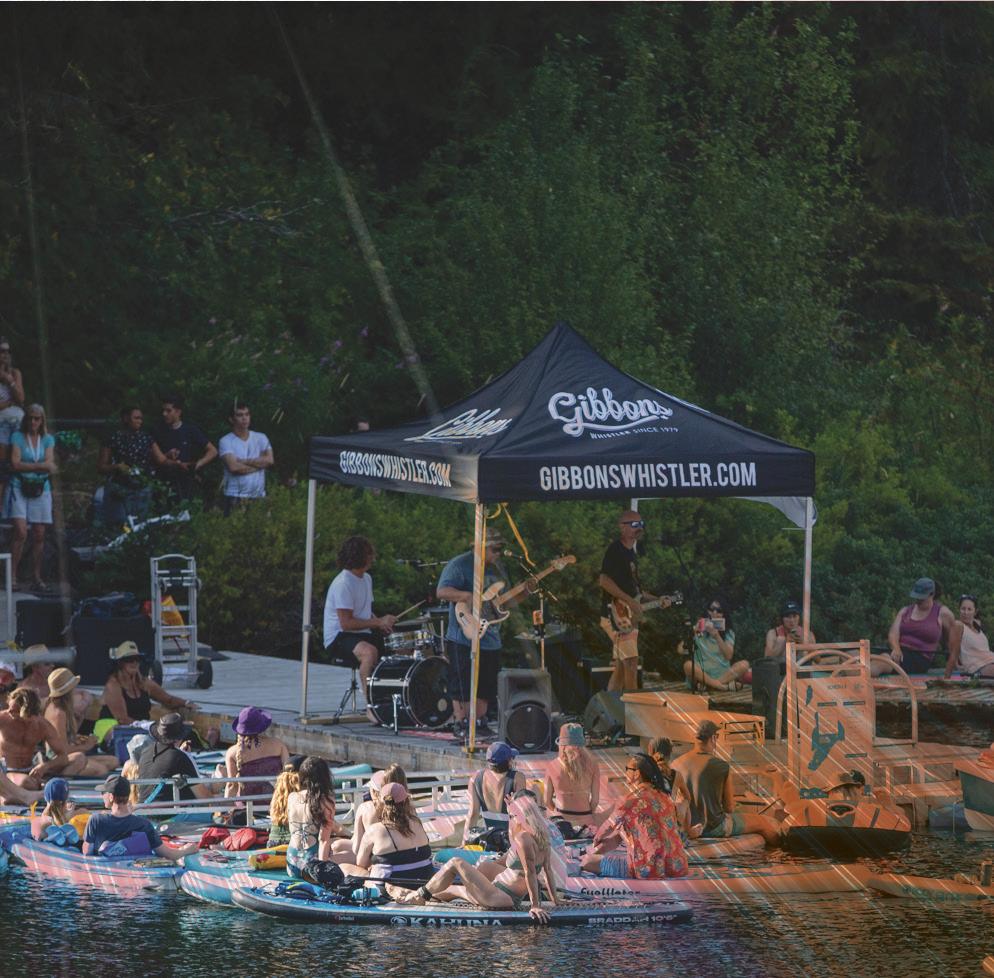


While everyone still seemed to be finding their footing, one thing was certain: In 2022, Whistler—and the rest of the Sea to Sky—was more than ready to party.






Every festival and event in Whistler and Pemberton has a tale to tell about surviving the pandemic and the effort behind their 2022 return.
The Whistler Children’s Festival, for example, moved its festivities from July to May—in part to avoid inclement weather and also to take advantage of a less jam-packed weekend in the resort. It was back to in-person events, including, for the first time, onstage performances in the Maury Young Arts Centre. In all, the festival spanned two weekends with 14 performances and 12 workshops.


Of course, that wasn’t the only event Arts Whistler hosted. Their wildly successful Art on the Lake (born during the pandemic for its outdoor and physical distancing elements) returned, this time for two days with 10 live painters and 12 musical acts. It also launched the emhám series, celebrating Indigenous arts and knowledge, hosted the Anonymous Art Show—which sold a record-breaking 156 pieces—along with several other exhibits, and kicked off the Arts Whistler Live! Performance series.
Laugh out LIVE!, a uniquely Whistler comedy variety show, sold out a 15-week theatre run, returning for equally successful holiday shows in December.
Festivals like the Whistler Writers Festival—which ran from Oct. 13 - 16—and the Whistler Film Festival—which kicked off Nov. 30 and ran in-person until Dec. 4—both welcomed back audiences at full-capacity but also kept the online options that proved a success in the pandemic era.
“The idea is all the authors come in person, but we’re also livestreaming, adding the technical side onto the in-person side. It definitely adds another half a festival—maybe more than half,” Rebecca Wood Barrett, executive director of the Whistler Writers Festival, told Pique in October.
Crankworx, Whistler’s popular celebration of mountain bike culture, meanwhile, was greeted by an enthusiastic community when it returned to the resort in August.
“One of the things that really struck me this year was how much the local community embraced and embraces Crankworx,” says Darren Kinnaird, managing director of the mountain bike festival. “I think that’s one of the things that stood out was how much the local community wanted to be part of it and wanted to support it in all the different ways. I can’t thank the local community enough.”
The festival’s key arts events—the Deep Summer Photo Challenge and Dirt Diaries—saw huge crowds return to the lawn at Whistler Olympic Plaza.
“I was quite shocked by how many people did turn out,” he says. “I got there a little late and I was pulling up a piece of grass. People were so into it. We were lucky the weather was nice. It’s a part of mountain biking away from the racing that showcases what people love about this sport.”
Spud Valley also celebrated a return of events in 2022.
The Pemberton Arts Council welcomed new leadership, with former Arts Whistler staffer Anna Lynch taking the
helm. She helped lower the price of membership in hopes of making it as accessible as possible, ushered in the new Outside Voices Mural Project, and pointed towards a future of growing membership.
And, of course, there was the return to hosting arts events in the community.
The Pemberton and District Museum and Archives Society also saw a new face in its executive director role this year. Former Arts Whistler staffer Charmaine Carpenter moved into that position after the departure of long-time director Niki Madigan.
“Pemberton is clearly growing and it’s not just people with a long history here, but there are a lot of new people moving into the community, so we want to get them to actually engage with the neighbourhood and the spaces around them and find ways to bring them out,” Carpenter told Pique back in May.
The Audain Art Museum hosted two new exhibits in 2022 (in addition to Riopelle: The Call of the Norther Landscapes and Indigenous Cultures, which kicked off in October 2021 and ran until February 2022).

The first was Wolves: The Art of Dempsey Bob, which featured a selection of that artist’s masks, panels, wall sculptures, vessels, regalia, bronze casting, goldsmithing and printmaking (phew!) borrowed from public and private collections across the country.
That show ran from April 2 until Aug. 14.
Then, on Sept. 17, the museum celebrated the opening of Out of Control: The Concrete Art of Skateboarding (which you can see until Jan. 8), exploring the intersection of skateboarding and contemporary art.
The Point Artist-Run Centre marked a busy summer season,
which kicked off with a re-opening after winter renovations. The 60-year-old Alta Lake building saw its floors refinished, got a fresh coat of paint, new lighting and electrical upgrades.
The Squamish Lil’wat Cultural Centre also had a busy year. You might have seen its ambassadors participating in myriad events around town, but also the venue hosted several exhibits as well.
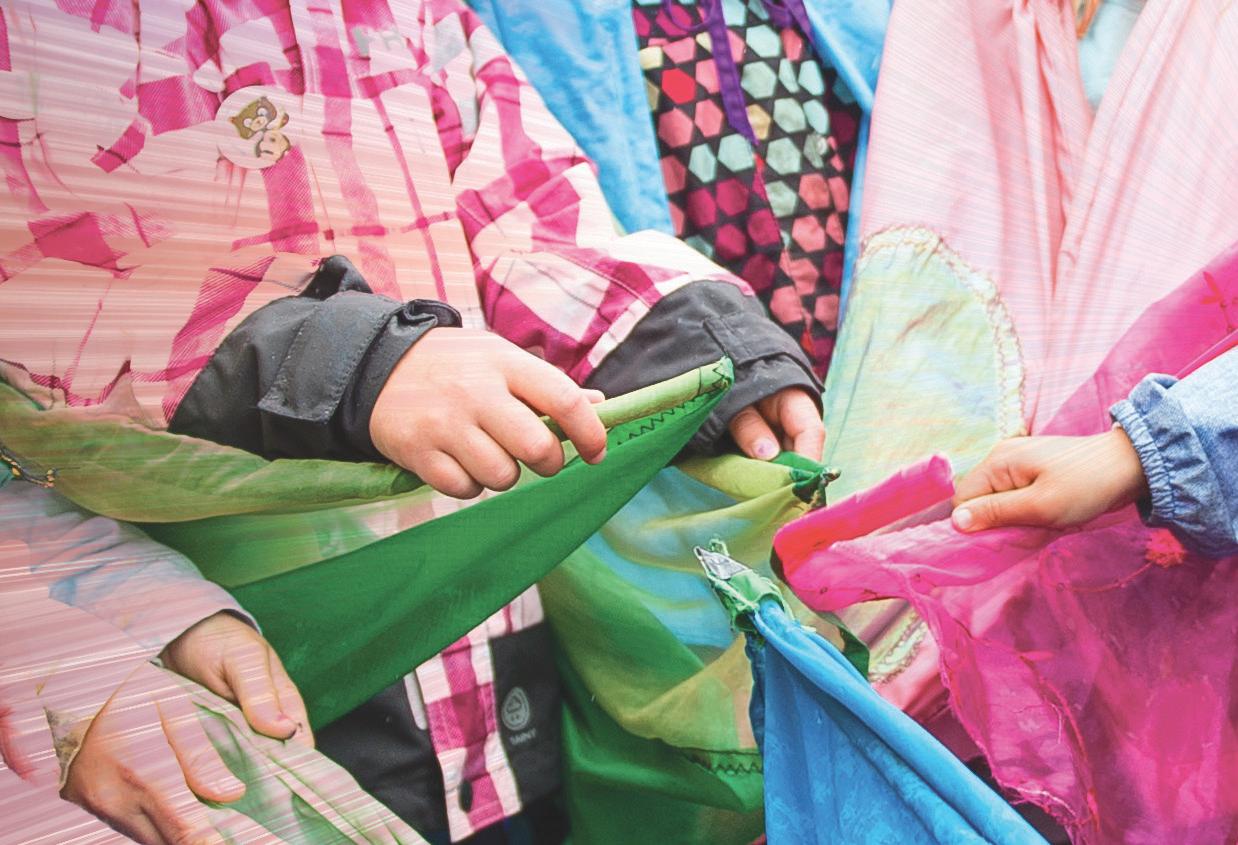


They ranged from the travelling interactive exhibit Our Living Languages: First Peoples’ Voices in BC to the Ancient Medicine Exhibit, which explored the way medicinal plants are used by Indigenous people to manage health.
The SLCC also wrapped up the year with a brand-new exhibit that opened on Dec. 21 called Unceded: A Photographic Journey Into Belonging. It runs until May 21, 2023.
Following what has been a trend the last couple of years, Whistler saw a few long-time, established locals bid farewell to the resort.

Among them were potter Vincent “Binty” and weaver Cheryl Massey, who moved to the Sunshine Coast after calling Whistler home for 37 years. Vincent also played a role in the early years of the Whistler Arts Council (now Arts Whistler) and was a long-time volunteer with Whistler Search and Rescue.
“There’s a few of us that have been leaving over the years that have been here that long that are taking those stories with them, and there’s a few that have passed in the meantime,” he said. “Regrettably, I feel like we may be leaving a giant hole here, and that’s what a lot of people are saying to us.”
On a happier note, a Whistler mainstay hit a fun milestone in June. Armchair Books marked its 1 millionth customer, a U.K. bookseller who was visiting Whistler and won herself a gift certificate.
One Pique’s most popular arts stories from 2022 was about designer Sarah Richardson’s new HGTV show, Sarah’s Mountain Escape. The reality show chronicled the celebrity’s challenges purchasing, renovating, and renting out a Whistler luxury home.
The most prominent theme of the year for Spud Valley was Pemberton’s rapid population growth and the ripple effects on the community’s culture, infrastructure and housing situation.

At the beginning of the year, Statistics Canada released data that proved what most locals in the valley already know: Pemberton’s population is booming.
Between 2016 and 2021, the Village’s population rose 32.4 per cent, from 2,574 people to 3,407 people, giving Pemberton the third fastest growth rate of any municipality in the province and the highest growth rate of any village in B.C.
The statistics also showed Pemberton’s population is the youngest in the Sea to Sky, and one of the youngest communities in the country, with an average age of 35.4 years old, compared to provincial and national averages of 43.1 and 41.9, respectively.
That pace doesn’t appear to be slowing down either, with hundreds of new homes currently proposed in the community over the next five years.
The conversation around how to handle that growth dominated the local election, which saw incumbent Mayor Mike Richman face off against former councillor and Pemberton Valley Lodge owner David Mackenzie and business owner Chadi Abouhalka. Richman won his third term with 61 per cent of the vote on a platform of sustainable growth and investing in critical infrastructure.
Pemberton council also saw the addition of two new faces, Katrina Nightingale and Laura Ramsden, joining incumbents Ted Craddock and Jennie Helmer.
In the Squamish-Lillooet Regional District (SLRD), Russell Mack was re-elected by acclaimation as Area C representative, which includes the area surrounding Pemberton, including the Pemberton Meadows.
Staffing-wise, both the SLRD and the Village of Pemberton gained new CAOs, as former Whistler Public Library director Elizabeth Tracy took the reins in Pemberton and former City of Lethbridge manager Craig Dalton took over as the SLRD’s chief administrative officer in 2022.
On the housing front, the Village of Pemberton (VOP) saw a handful of significant projects make their way through the council.
The year opened with two other major housing development proposals that came before officials in January.
The first project, by Skénkenam Developments General Partnership, is a joint partnership between the Lil’wat Nation and Pemberton Benchlands Development Corporation housing.
The proposed development would, if approved, add 270 new single-detached and multi-family units as an extension of Eagle Ridge Drive just west of the Village’s commercial core, overlooking the town.
The other proposed development, called Redwood, could see 176 multi-family townhouses, stacked townhouses and 2,751 square metres of commercial space on 3.3 hectares of land on Pemberton Farm Road East.
The ancillary effects of the housing crisis on Spud Valley have become increasingly contentious as finding affordable accommodation becomes more difficult.
In June, the VOP announced it was cracking down on illegal suites in the Tiyata Village neighbourhood—although it’s unclear what was to happen to tenants who unknowingly rented non-conforming suites.
One of the most controversial housing stories surrounded the affordable Sea to Sky Community Services housing development slated for Harrow Road, which council approved in mid-October, paving the way for 63 affordable housing units.
The development will erect the tallest residential building in Pemberton’s history, drawing opposition from neighbouring properties. The project will start construction sometime in 2023.
In the SLRD, housing remained an important theme over the year as the housing crisis continues to significantly affect rural areas surrounding Pemberton.

At the end of this year, the SLRD adopted new amendments to its Official Community Plan bylaws to guide future affordable housing construction in Electoral Areas B, C and D. In line with changes made earlier in the year to the Whistler Housing Authority’s eligibility criteria, the amendments update the definition of affordable housing as rental or ownership housing priced so that monthly payments are less than 30 per cent of gross household income.
The amendments also require new multi-family developments to either designate a minimum of 15 per cent of units for affordable housing or provide land for affordable housing.
Rising property prices in the valley have resulted in a chain reaction for enterprises, as young people hoping to get into farming are finding it difficult to enter the market.
At the same time, many acreages are being purchased and left unfarmed. As of 2021, 125 farming operations are operating in the valley, producing gross farm receipts of $6,526,365.


Intertwined with the housing crisis, the other news story that simmered over the year is the continued labour shortage in the valley, resulting in the loss of services and stores cutting back hours.
The lack of staff has had wide-ranging implications on all sectors in the valley, be it the need for more emergency responders, childcare, and staff for local restaurants.
Due in part to the labour shortage, Pemberton lost its only taxi service, Mountain View Taxi, in October, while numerous
businesses within the valley had to cut their hours.
Due to Whistler’s current housing situation, more people choose to live in Spud Valley and commute between the two communities. To address the increasing number of commuters, in April, the VOP secured funding to build a new park and ride that will enable commuters a secure spot to park and take the bus to Whistler.
The SLRD has made clear the top priorities for the coming year are to address housing, good governance, healthy organizations and regional transit.
The long-term plan for the land is to use part of it for a mental health and rehabilitation centre, providing a refuge for Nation members, as well as a venue that can be used for retreats and traditional purposes.
Another significant Lil’wat development was the approval of the Olympic legacy mixed-use project at the corner of Highway 99 and Alpha Lake Road at the entrance to Function Junction in Whistler.
Whistler council approved the mixed-use development, first proposed in 2017, in February. The project, once completed, will include Whistler’s fourth gas station, a brewery, and 48 units of dedicated employee housing. The Nation has not announced when construction will begin.
The Lil’wat Nation’s 2022 can be best summarised as a year of returns, as pandemic restrictions ended and cultural events came back in full force in Mount Currie.



After a two-year absence, the Nation’s powwow finally returned in person to Ulusus Hall, bringing with it a sense of normalcy as the cultural ceremonies returned.



Another significant return for the Nation was when the Lil’wat regained some of its traditional territory at the northern end of the Pemberton Valley, the 98-hectare site of the former Coast Mountain Outdoor School. Returned at no cost to the Nation by School District 48, the property represents the Nation’s largest land acquisition since the 2020 Olympics. But it’s true significance goes beyond a mere patch of land.
“It’s very important to acknowledge the land and the ancestors, because we always had a connection with them, so [with this agreement], we’ve kind of reconnected back with them, the way it should be,” said Lil’wat Nation Skalulmecw Chief Dean Nelson at an October ceremony commemorating the agreement.
Meanwhile, the Lil’wat Main Street Development will change the look of Mount Currie’s commercial core once complete.
The multi-family residential building, which will be located at the intersection of Highway 99 and Pemberton Portage Road across from St. Christopher’s Parish, passed third reading in October at the Squamish-Lillooet Regional District.
The housing development will provide 53 affordable housing units and half a dozen spaces for new businesses.
Last but certainly not least, one of the most important efforts of the year for the Lil’wat was co-leading the 2030 Olympic bid alongside the Squamish, Musqueam and TsleilWaututh First Nations, Whistler, Sun Peaks and the City of Vancouver.
Positioned as an opportunity to share the Nations’—and Canada’s—story of Truth and Reconciliation with the world, the bid promised to take advantage of existing facilities from the 2010 Games. Ultimately, the province squashed the bid, citing its exorbitant price tag. The early estimates put the cost to host the Games at $4 billion, $1.2 billion of which would be covered by taxpayers.
■
 BY DAVID SONG
BY DAVID SONG
THERE ARE PEOPLE who continue to scoff at the idea of global warming—or more accurately speaking, climate change. How can that be, they might say, when we continue to fight through weather events like the winter storm that pummelled B.C. for Christmas or the historic “bomb cyclone” that detonated over the Eastern Seaboard around the same time? It may not seem like Canadian winters are getting any warmer or shorter when brutal wind chills and paroxysmal outbursts of snow remain a perennial occurrence, but head to the mountains year after year and you’ll see a different picture.
Though he is no climatologist, Whistlerite Kai Smart grew up around snow. As the son of former Olympians John and Julia, who run Momentum Ski Camps together, Smart competed in all three freestyle skiing disciplines—slopestyle, big air and moguls— before focusing on slopestyle at age 14. Smart has been exploring the backcountry for about six years now, and the greatest impact of climate change he’s witnessed has come in summer: new ground exposed and new rock slides tumbling down as glaciers like the one
at Wedgemount Lake continue to retreat.
“If you talk to someone who’s been in Whistler for 40 years, they’d say, 100 per cent, whole mountains [have changed],” Smart said.
Determined to do his part as a citizen of the world rather than be a bystander and “let the world collapse in front of [him],” Smart partnered with athlete management and media company Pangea Creatives on its first major film, The Front Lines . Having premiered on YouTube on Dec. 21, the movie features interviews with University of British Columbia (UBC) climatology professor Dr. Simon Donner, freeride athletes Michael Mawn and Kayley Sherlock and representatives of the Freeride World Tour (FWT), in addition to Smart.
Their message: climate change is very real, and the ski and snowboard community has an equally real opportunity to do something about it.
Smart’s anecdotal observations line up with Donner’s findings. Research shows that, while winters remain individually variable and extreme weather events still occur, the overall trend features an increasing proportion of rain as opposed to snow. Freezing lines continue to move up mountains, causing quality powder to retreat upwards. A warmer atmosphere also holds more moisture, resulting in occasional catastrophes like the Pacific Northwest floods of November 2021.
The Front Lines opens by documenting a
2022 FWT event at Kicking Horse in Golden. Peering through binoculars at another skier making his way down the resort’s Ozone face, Mawn remarks that he sees nothing but ice. The snow was so hard that day that athletes left no tracks behind, forcing organizers to move the event to a different part of the mountain on short notice.
Filmmaker Ethan Herman, who co-founded Pangea Creatives in March 2020 and directed its first major movie, hesitates to say that the conditions at Kicking Horse last February were a straightforward product of climate change. Yet, he and Smart agree that they were a sign of future trends.
“[What we saw in Golden] is a really good indication of the struggle and the challenges that are coming,” Herman said.
Having skied for more than 30 years himself, Donner knows that skiers and snowboarders face a catch-22 regarding climate change. They stand to lose much of their lifestyle and industry if winters keep coming under attack, but they are also partially responsible for the problem. Travel and skiing go hand in hand for both the recreational enthusiast and the world-class athlete.
The FWT has been pursuing sustainability since 2020 and aims to be carbon-neutral by 2028. It has issued reusable bibs to athletes, water bottles to staff and media members,
and partnered with Audi to make the fully electric e-tron their official company car. According to the tour’s website, it has contributed to the planting of 5,780 trees and offset 566 tons of carbon dioxide in the last three years.
However, FWT CEO Nicolas Hale-Woods and senior manager Alicia Cenci revealed in the film that 80 per cent of greenhouse gas emissions generated by the 2022 Xtreme Verbier event came not from tour operations themselves, but from fans travelling to Switzerland to cheer on their favourite competitors. Such athletes, of course, must fly internationally to partake in various events all winter long if they wish to progress their careers.
According to Blackcomb Helicopters pilot Adam Dowds, who welcomes Sherlock onboard in the movie, traditional long-haul airliners like the Boeing 747 burn as much fuel in one transoceanic journey as he does in 1,200 hours of flight time, which takes the average commercial chopper pilot roughly four years to accumulate. More efficient aircraft like the Boeing 787 and Airbus A350 have been in service for years, but remain outnumbered by their older counterparts.
“The way the whole ski world is designed is not conducive to an environmentally friendly lifestyle,” Smart acknowledged.
BY CRAIG BARKER THE WHITE MOUNTAIN The Front Lines, a new film by Pangea Creatives, explores the impact of climate change on the ski and snowboard industry and how members of that industry are responding.Fortunately, a new generation of skiers and snowboarders has decided to take action. Smart, for instance, is diligent about recycling, riding public transit and minimizing his consumption of single-use plastics. Going forward, he intends to raise awareness within his own peer circles and join sustainability groups in his community. Mawn and Sherlock are also very cognizant of climate change, and expressed in the film their desire to make a positive impact.
The snowsport icons of today and tomorrow will need to raise their voices if we are ever to see the kind of wider reform needed to protect Canadian winters. After all, it can be difficult for the average Joe to take
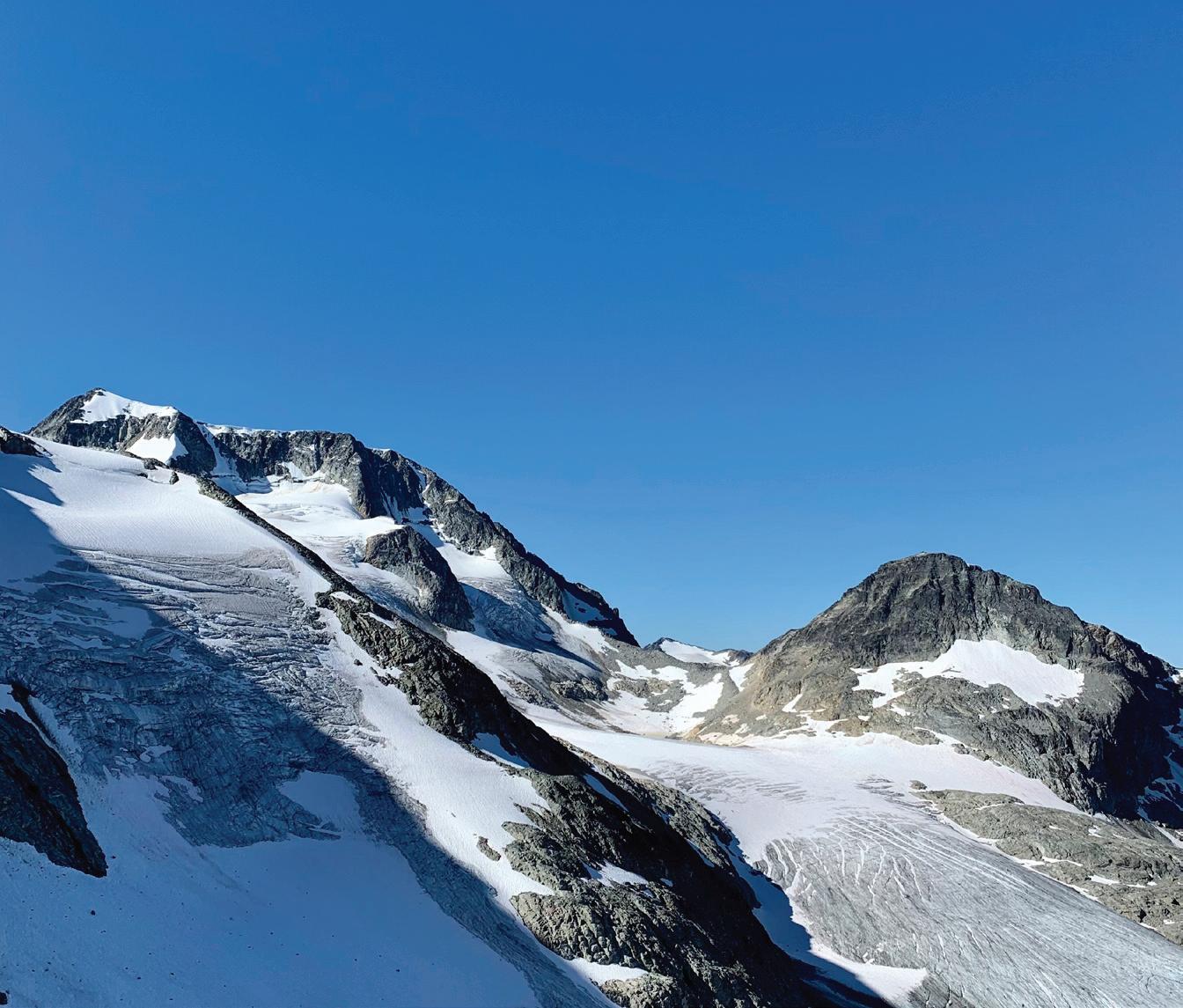 PHOTO BY KAI SMART
PHOTO BY KAI SMART
Herman and Hale-Woods find it immensely encouraging that many young skiers and snowboarders care deeply about the environment upon which their passions rely. Smart, Mawn and Sherlock have a chance to advocate for worthy causes in a personal, relatable way that most scientists can’t emulate.
“There’s so many ways we could be trying to change not the climate message, but the climate messengers,” said Donner in an on-camera interview with Smart.

“I am the eternal pessimist when it comes to climate change,” Herman admitted. “But, I think the biggest thing that stood out to me [when filming The Front Lines] is the number of young people that care.”
Although it is great to see organizations
climate change seriously when he finds a foot of snow sitting on his car. It also depends on where you’re from: as a third-year business student at UBC, Smart knows how much less convenient it is to live sustainably in a big city compared to an ecologically conscious town like Whistler.
Climatologists like Donner will keep doing their part, but not everyone finds a voice like his to be compelling. Scientific journals are not particularly accessible or layman-friendly as reading material, and some people are flat-out disinterested in—or distrustful of— mainstream science. Yet, the messenger is often as important as the message he or she bears, and perhaps these folks would be more willing to heed a call from their favourite athletes.
For that reason, individuals like Donner,





like the FWT and the multinational investment firm BlackRock launch climatefriendly initiatives, ultimately the buck must stop with everyday people when it comes to sustainability. Not everyone can afford to install solar panels in their home or exclusively buy organic produce, but there are many ways to make a difference without breaking the bank. For instance, Herman suggests that avid skiers plan out their trips more efficiently, hitting multiple stops on the same route in order to minimize gas usage.
Though some scientific models predict a bleak future, Smart is optimistic that awareness of climate change in his generation will pay dividends down the line. “It doesn’t feel like we’re alone [dealing with] this,” he said. “It is a global issue, and I feel like people everywhere are doing the right thing.” n















Come in for brunch on Saturdays & Sundays from 11am-2pm to enter to win
Next game Jan. 27th vs Columbus.















In accordance with subsection 225(2) of the Local Gover nment Act, notice is hereby given that the Squamish-Lillooet Regional District (SLRD) Board will be considering a proposed amendment to SLRD Procedure Bylaw No 1499-2016 (the “Procedure Bylaw”) at its regular meeting on January 25, 2023 The purpose of the proposed bylaw amendment is to streamline operations, as follows:



• To align, with the Local Gover nment Act, the notice period for Special Meetings and the method of providing notice to Directors; and

• To remove the requirement that Committee meetings must have a specified place (physical location) at which the public may hear or watch and hear the meeting.

FOR FURTHER INFORMATION, please contact Kristen Clark, Corporate Officer (604) 894-6371 ext 230 or (toll-free) 1-800-298-7753 or kclark@slrd.bc.ca
“It is a global issue, and I feel like people everywhere are doing the right thing.”
NO ONE COULD BLAME you for trying not to conjure up too many memories from the past year. First, the toxic trucker convoys. Then Putin’s nasty war. A summer with enough heat and drought to cook salmon right on the streambanks, and I don’t mean over a bonfire. More toxicity, thanks to Musk and social media, and more COVID deaths in Canada than any previous year.
BY GLENDA BARTOSHThen a deflating COP conference on our crumbling climate. And, finally, inflation and more disruptions chipping away at budgets and buying power, with a grand finale topping it all off like whipped cream with a sour cherry on top: Just as people felt chipper or courageous enough to hop on a pre-Christmas flight to visit loved ones or find a bit of sun, they ended up on trips from hell.
Whew. Goodbye 2022. And good riddance.
But wait… We saw at least a few bright spots last year, maybe ones even bright enough to carry us into the new with, if not exactly grace and élan, then some complicated optimism.
Given New Years’ resolutions still carry a lot of weight, ahem, around food and fitness, here are a few tidbits from the past year that
make me feel at least somewhat hopeful we might get through 2023 in a little better shape on the personal level, and beyond.
Anytime you need a good laugh, just sign up for The New Yorker’s Daily Humor emails. They’re filled with wit and, better, those cartoons most of us honest enough to say so admit are the main reason we read the illustrious magazine. One of the last ones in the Old Year features two giant whale buddies (these are cartoon whales, eh?) swimming along. One says to the other, “My New Year’s resolution is to lose thirty-eight thousand pounds.”
At least none of us has to lose that much, but most of us around here could do with a little paring down. So last year I was glad to learn from professor of evolutionary anthropology and author, Herman Pontzer, that many things we believe about metabolism and how we burn calories simply ain’t true.
For one, the work that Pontzer and his colleagues have done by separating data about age and size proves there’s no difference in metabolic rates between men and women with the same body weight and body fat percentage—nuking the old trope that women have a lower metabolic rate than men.
On another front, many think we pack on weight once we get beyond our 20s because our metabolic rate slows down. Nope. Pontzer says there’s no scientific support for the belief that our metabolism decreases as we age, at least not until we reach 60. Then it slows about seven per cent per decade, partly due to losing muscle mass as we age.
Keeping your metabolic rate higher, like a young person’s—by doing things like exercising more, building muscles through weight training, and even getting a good night’s sleep—might even prove to be a sign of aging well, and protective against things like heart disease and dementia.
To learn more about all this, check out Pontzer’s book, Burn: New Research Blows the Lid Off How We Really Burn Calories, Stay Healthy, and Lose Weight and his articles in Scientific American.
Speaking of whales, a study published in Nature indicates that, although there’s much uncertainty about the numbers, sperm whale populations, overall, increased a little in 2022, and a lot where there’s not much human interference. Unfortunately, that’s about the only bright spot about whales, as their populations are now only about one 10th of pre-whaling numbers.
Shark populations, on the other hand, got a major boost at the tail end of 2022 when the U.S. finally joined about 50 other countries and banned buying and selling shark fins. Strangely buried in the annual military policy bill, the new legislation won’t stop fishers from catching sharks, but it should limit the troubling practice of slicing off their fins and dumping the mutilated sharks—some 70 million a year—to die a dreadful death for big profits.
Like so many old ways of thinking that still haunt us, zero scientific proof supports the myth of shark fins’ “medicinal” benefits,
like boosting your sex life or making skin beautiful. There is evidence, though, that the high concentration of an amino acid, BMAA, found in the fins can contribute to Alzheimer’s and ALS.
Despite all this and the fact they have no taste or nutritional value, eating shark fins remains an important status symbol in Chinese culture, especially in mainland China.
Birthdays rank right up there with the new year as reminders that time marches on— irrevocably. Most of us hope we can, too, especially with more good news from the science front in 2022—a “longevity diet” can add years to your life.

The new diet based on a huge study by a Norwegian university into the body’s aging process indicates you can increase your life expectancy by up to 13 years by changing what (basically vegetarian, with some fish); when (eat “by daylight” or keep it to eight hours); and how much you eat (you know this one— fewer calories).
I’ll write more about longevity and this diet in my next column, but for now keep in mind that while millions of people die each year from starvation and malnutrition, about 11 million people die annually from eating too much and the wrong kind of stuff.
In the meantime, dig out the best right stuff from your kitchen shelves, and get off to a good new start.
Glenda Bartosh is an award-winning journalist who always likes fresh beginnings. n
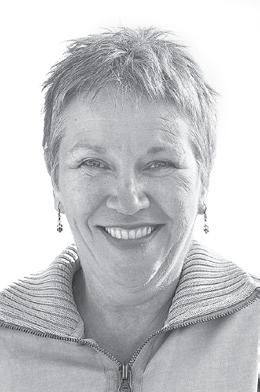
a.m. Jane
R Mom and Baby 2.0 12-1 p.m. Sara
I Zumba 12:15-1:15 p.m. Carmen

I Gentle Fit 1:30-2:30 p.m. Diana
F FLEXIBLE REGISTRATION Flex-reg’


I TRX Mixer 5:15–6 p.m. Mel

F Spin 6:15-7:15 p.m. Marie-Anne


I Strong Glutes & Core 6:15-7:15 p.m. Carly

I Mountain Ready 5:30-6:30 p.m. Anna




I HIIT Express 5:15-6 p.m. Alex R Prenatal Fitness 5:30-6:30 p.m. Sara
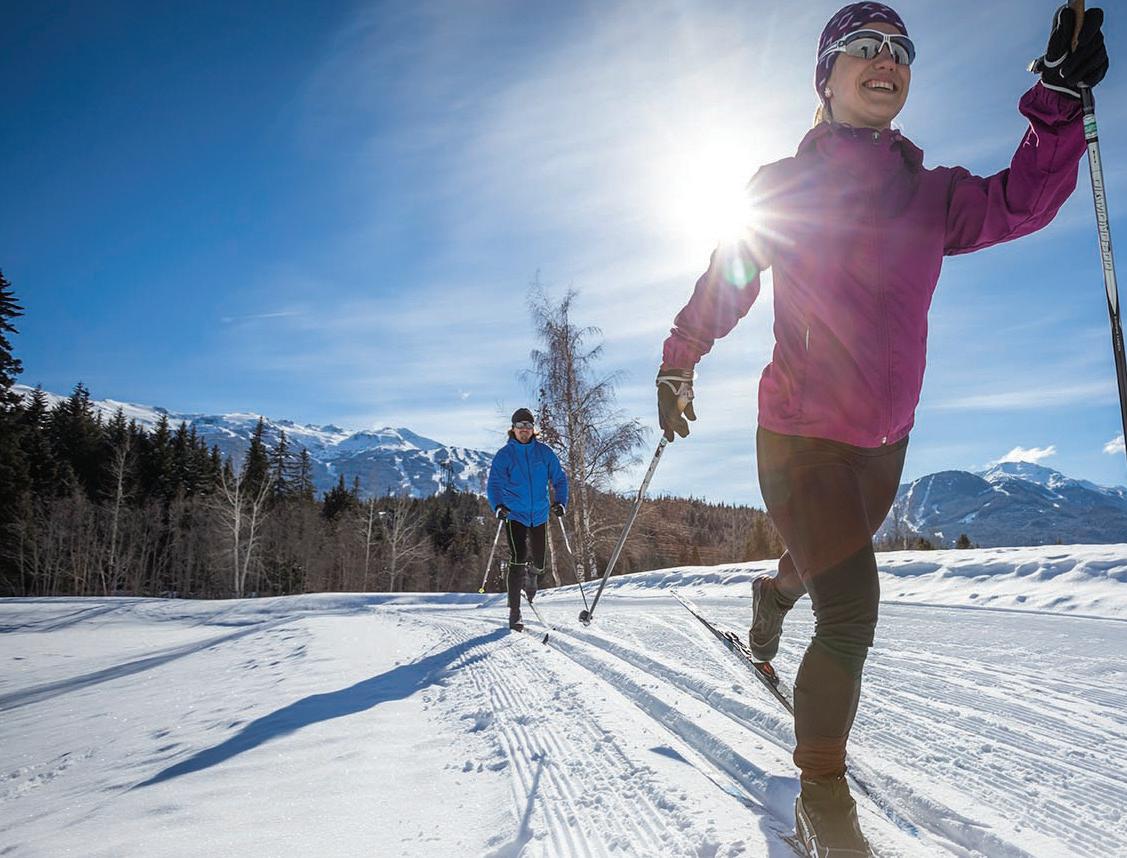


F Spin 6:15-7:15 p.m. Courtney

I Yoga
F Spin 6:15-7:15 p.m. Alex
I Zumba 6:30-7:30 p.m. Carmen
NOT ALL QUESTS to find a life balance involve work and family.
In Whistler, Prajakta Kharkar Nigam observed a different kind of struggle for inner equilibrium.

“When I moved here, one of the driving factors for us was we saw people taking life holistically,” she says. “The kids were not in school five days a week. They were in school four days a week and one on the mountain. That’s such a refreshing mindset change. I’ve not seen anyone prioritizing play alongside work so well as Whistlerites do. Over time, now that I’ve lived here almost three years, it’s a kind of balance that prevents you from doing too much at work … But it’s still an external kind of balance. When it’s external, what can end up happening is you can become obsessive about this other thing.”
Kharkar Nigam has spent a good deal of time reflecting on that concept—sparked in
part by becoming a mother while working as an economist.
“I couldn’t relate to the work-life balance idea the way it was being peddled,” she says. “I was enjoying my work and the intensity of my work. I couldn’t relate to that whole dialogue of taking time away from work and adding it to life. It seemed like a zero-sum game.”
So she started observing people around her—from all stages and walks of life. “I realized all these people were making the same mistakes. They were trying to balance something that was external from them. A genuine balance should be an inner balance,” she says.
That’s when she sat down at her desk and mapped out a “pyramid of balance” that became the blueprint for her new selfpublished book, Buddha Balance Journal.
Filled with short exercises, it aims to help busy people stop and “take stock of what it feels like to be centred.”
“At the end of the journal, pick one or two or three that you would make a daily practice out of,” she says.
While it’s not a typical book, the writing
[aspects of writing] and more about the life of a writer. How do you keep going when there aren’t any external deadlines or a publisher waiting to publish what you write?”
This wasn’t, however, Kharkar Nigam’s first book. Perhaps embodying the idea of “balance,” her other titles couldn’t be more different than Buddha Balance Journal
Perspectives on Uganda: Reflections of an Odi Fellow, was inspired by her time working as an economist with Reserve Bank of Uganda while her very first foray into publishing was a book of poems.
So, how did an economist who has lived and worked around the world wind up in Whistler?
“Anytime anyone asks me, ‘Why did you choose Whistler?’ I say, ‘I didn’t choose Whistler, Whistler chose me,’” she says.
process was still marred by bouts of writer’s block, something Kharkar Nigam’s new friend, author and Whistler Writers Festival founder Stella Harvey, helped her with.
“Stella has been my mentor for writing since I moved to Whistler,” she says. “She’s one of the first people I met in Whistler through another friend … [She’s] so supportive. During the pandemic, it wasn’t easy to make friends. We used to go on hikes and during those walks I gained nuggets of writing wisdom and life wisdom from her. It was less about technical
Kharkar Nigam, her husband and two children were based in Toronto, but on a sabbatical travelling the world when February 2020 hit.
“We were travelling in India when the prime minister’s famous speech [happened], ‘If you’re a Canadian living abroad, it’s time to come home,’” she says. “We decided to come home.”
The family was faced with two choices. They could either return to Toronto—which had sky-
GET CENTRED Whistler author Prajakta Kharkar Nigam celebrated the release of her new book Buddha Balance Journal last month. PHOTO SUBMITTED“I’ve not seen anyone prioritizing play alongside work so well as Whistlerites do.”
- PRAJAKTA KHARKAR NIGAM
Join the Whistler Naturalists for a bird walk on the first and third Saturday of each month. The bird walks are along the Valley Trail to Rainbow Park or Green Lake, covering many types of habitat. They’re free and open to anyone interested in birds. You’ll be joined by birding experts who compile a detailed inventory list on year-round bird activity. Start time changes seasonally.



> Jan. 7, 8 a.m.
> Meet at bottom of Lorimer Road
> Free for members, by donation for non-members



Where else but Whistler would performers entertain you with an electric mix of music, dance and spinning fire? Watch world-class athletes flip and twist through a burning ring of fire, then finish the night off with a first-class fireworks display.
> Jan. 8, 7 p.m.
> Skier’s Plaza




Come out and have some fun with your friends and co-workers. This race series is open to skiers, snowboarders and telemarkers with different gender and age divisions. No racing experience is required to join in on the fun of recreational racing.
> Jan. 12
> Find full details at whistlerblackcomb.com/KVRS

Arts Whistler Live! presents: Comedy Double-header— Julie Kim and Katie-Ellen Humphries with guest Henok Meresa.
Join this lineup of award-winning comics for a night of sharp wit and hilarious personal anecdotes as they spread happiness, lighten hearts, and unite through laughter.
> Jan. 28, 7:30 p.m.

> Maury Young Arts Centre
> $25 Find full details at artswhistler.com/live.
FROM PAGE 38
high COVID numbers—or head to Vancouver, where Kharkar Nigam’s in-laws lived.

B.C. still had schools open, so they headed west.
While they were travelling they had researched schools, and were drawn to the Waldorf educational philosophy. They visited schools in North Vancouver, Squamish and on Vancouver Island, but it wasn’t until they saw the Whistler Waldorf School that something clicked.

“Everything fell into place,” she says. “I took that as a sign.”

They intended to stay for a year, but in that age-old Whistler tale, they’re still firmly in the community three years later.
Kharkar Nigam celebrated her new book
with a launch at the Spruce Grove Field House last month. Buddha Balance Journal is also available at Armchair Books, Green Lake Station in Rainbow, and through her directly (at pkharkar@gmail.com).
“One lady at my book launch commented at the end of my reading that she relates to this,” Kharkar Nigam says. “She took time away from work to focus on her family, but all the time [she] put towards family became the activity that saps her energy. My whole argument in the Balance Journal is that these aren’t separate compartments. If you’re feeling internally centred, it doesn’t matter if you’re skiing or working on academics or playing with your baby.” ■


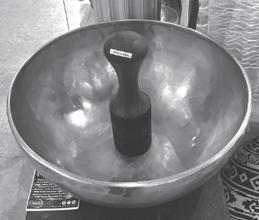 BY JILLIAN ROBERTS
BY JILLIAN ROBERTS
AS WE HAVE RECENTLY learned at the Whistler Museum, maintenance problems can pop up at the most inconvenient times and create quite the disruption. The same was true when a truck came down on power lines in Whistler one New Year’s Eve.


Disposing of human waste was an ongoing challenge for residents of Alta Lake and Whistler until the wastewater treatment plant opened in 1977. Prior to the sewer system, residents had private septic systems or outhouses, which posed environmental and practical problems for the growing community. On the weekends, Brian Leighton, who lived in Creekside, regularly had to knock on the door of the upstairs units asking if they would hold off from flushing the toilets, as the septic system would back up through his toilet when all the units were full.
According to Garibaldi’s Whistler News, in 1977, Whistler had a permanent population of 800, but this swelled to nearly 7,000 during the peak season and a reliable sewer system was required before the town could grow further. The importance of the sewer was not understated by Mayor Pat Carleton during the grand opening of the wastewater treatment plant, which included lunch, tours and much fanfare, when he said, “the foundation of Whistler’s future is this plant and sewer system.”
Despite initially being built to accommodate a growing community, the wastewater treatment plant could not keep up with the rapid and relentless increase in the population. Cliff Jennings was originally in charge of water distribution and sewer collection for the Resort Municipality of Whistler (RMOW) before becoming the superintendent of the wastewater plant. According to Jennings, every two years the wastewater treatment plant was having an expansion. However, with the economy slowing in 1981, there was no money
to improve the plant coming from the provincial or federal governments despite the population increasing. “We were pretty much always three years behind until just very, very recently. It was always just [cross your fingers],” Jennings said.
Continual construction of the plant during this time had its own challenges. Timing had to be perfect, because it could only be powered down for short periods—about 90 minutes— before the waste had to be diverted, which meant raw sewage would be pumped directly into the river. “We never had to purposely divert, but we got awfully close,” Jennings said.
On the fateful New Year’s Eve, the power company had been working on the lines at the intersection of Highway 99 and Nesters when the hydraulic lift broke, landing the lift on the power lines. To get the lift off and the lines restored, the power would have to be turned off to the entire Whistler Valley while it was fixed. This included Whistler Village, which relied on floodlights as the main security measure on New Year’s Eve. Bringing down the lights would have meant total chaos in the busy village, and would be questionable for safety. However, without turning the entire power grid off, the line could not be fixed, and power to Whistler Cay and Nesters would be off all night until BC Hydro could fix the truck on the line. That would mean that the wastewater plant for these areas would also have no power for far longer than the 90 minutes, and without power, diversion of wastewater into the environment.
Due to safety concerns in the village, the decision was made to keep the power off to Whistler Cay and Nesters for the night, rather than turn all the power off to the entire valley to fix the line. Thankfully, Jennings and the wastewater team were instead able to keep the treatment plant going with a diesel generator. The lucky team got to ring in the new year with the sewage in the dark, but kept it going long enough that the lines could be fixed without any diversion, while revellers could continue as normal in the












ARIES (March 21-April 19): “My life was the best omelet you could make with a chainsaw,” observed flamboyant author Thomas McGuane. That’s a witty way to encapsulate his tumultuous destiny. There have been a few moments in 2022 when you might have been tempted to invoke a similar metaphor about your own evolving story. But the good news is that your most recent chainsaw-made omelet is finished and ready to eat. I think you’ll find its taste is savoury. And I believe it will nourish you for a long time. (Soon it will be time to start your next omelet, maybe without using the chainsaw this time!)
TAURUS (April 20-May 20): After meticulous research of 2023’s astrological omens, I have come to a radical conclusion: You should tell the people who care for you that you’d like to be called by new pet names. I think you need to intensify their ability and willingness to view you as a sublime creature worthy of adoration. I don’t necessarily recommend you use old standbys like “cutie,” “honey,” “darling,” or “angel.” I’m more in favour of unique and charismatic versions, something like “jubilee” or “zestie” or “fantasmo” or “yowie-wowie.” Have fun coming up with pet names that you are very fond of. The more, the better.
GEMINI (May 21-June 20): If I could choose some fun and useful projects for you to master in 2023, they would include the following: 1. Be in constant competition with yourself to outdo past accomplishments. But at the same time, be extra compassionate toward yourself. 2. Borrow and steal other people’s good ideas and use them with even better results than they would use them. 3. Acquire an emerald or two, or wear jewelry that features emeralds. 4. Increase your awareness of and appreciation for birds. 5. Don’t be attracted to folks who aren’t good for you just because they are unusual or interesting. 6. Upgrade your flirting so it’s even more nuanced and amusing, while at the same time making sure it never violates anyone’s boundaries.
CANCER (June 21-July 22): When she was young, Carolyn Forché was a conventional poet focused on family and childhood. But she transformed. Relocating to El Salvador during its civil war, she began to write about political trauma. Next, she lived in Lebanon during its civil war. She witnessed first-hand the tribulations of military violence and the imprisonment of activists. Her creative work increasingly illuminated questions of social justice. At age 72, she is now a renowned human rights advocate. In bringing her to your attention, I don’t mean to suggest that you engage in an equally dramatic self-reinvention. But in 2023, I do recommend drawing on her as an inspirational role model. You will have great potential to discover deeper aspects of your life’s purpose—and enhance your understanding of how to offer your best gifts.
LEO (July 23-Aug. 22): Are the characters in Carlos Castañeda’s books on shamanism fictional or real? It doesn’t matter to me. I love the wisdom of his alleged teacher, Don Juan Matus. He said, “Look at every path closely and deliberately. Try it as many times as you think necessary. Then ask yourself, and yourself alone, one question. Does this path have a heart? If it does, the path is good; if it doesn’t, it is of no use.” Don Juan’s advice is perfect for you in the coming nine months, Leo. I hope you will tape a copy of his words on your bathroom mirror and read it at least once a week.
VIRGO (Aug. 23-Sept. 22): Teacher and author Byron Katie claims, “The voice within is what I’m married to. My lover is the place inside me where an honest yes and no come from.” I happen to know that she has also been married for many years to a writer named Stephen Mitchell. So she has no problem being wed to both Mitchell and her inner voice. In accordance with astrological omens, I invite you to propose marriage to your own inner voice. The coming year will be a fabulous time to deepen your relationship with this crucial source of useful and sacred revelation.
LIBRA (Sept. 23-Oct. 22): Libran philosopher Friedrich Nietzsche offered advice that is perfect for you in 2023. It’s strenuous. It’s demanding and daunting. If you take it to heart, you will have to perform little miracles you may not yet have the confidence to try. But I have faith in you, Libra. That’s why I don’t hesitate to provide you with Nietzsche’s rant: “No one can build you the bridge on which you, and only you, must cross the river of life. There may be countless trails and bridges and demigods who would gladly carry you across; but only at the price of pawning and forgoing yourself. There is one path in the world that none can walk but you. Where does it lead? Don’t ask, walk!”
SCORPIO (Oct. 23-Nov. 21): How might you transform the effects of the limitations you’ve been dealing with? What could you do to make it work in your favour as 2023 unfolds? I encourage you to think about these questions with daring and audacity. The more moxie you summon, the greater your luck will be in making the magic happen. Here’s another riddle to wrestle with: What surrender or sacrifice could you initiate that might lead in unforeseen ways to a plucky breakthrough? I have a sense that’s what will transpire as you weave your way through the coming months in quest of surprising opportunities.
SAGITTARIUS (Nov. 22-Dec. 21): Sagittarian singer Tina Turner confided, “My greatest beauty secret is being happy with myself.” I hope you will experiment with that formula in 2023. I believe the coming months will potentially be a time when you will be happier with yourself than you have ever been before—more at peace with your unique destiny, more accepting of your unripe qualities, more in love with your depths, and more committed to treating yourself with utmost care and respect. Therefore, if Tina Turner is accurate, 2023 will also be a year when your beauty will be ascendant.
CAPRICORN (Dec. 22-Jan. 19): “I’m homesick all the time,” writes author Sarah Addison Allen. “I just don’t know where home is. There’s this promise of happiness out there. I know it. I even feel it sometimes. But it’s like chasing the moon. Just when I think I have it, it disappears into the horizon.” If you have ever felt pangs like hers, Capricorn, I predict they will fade in 2023. That’s because I expect you will clearly identify the feeling of home you want—and thereby make it possible to find and create the place, the land, and the community where you will experience a resounding peace and stability.
AQUARIUS (Jan. 20-Feb. 18): Storyteller Michael Meade tells us, “The ship is always off course. Anybody who sails knows that. Sailing is being off-course and correcting. That gives a sense of what life is about.” I interpret Meade’s words to mean that we are never in a perfect groove heading directly towards our goal. We are constantly deviating from the path we might wish we could follow with unfailing accuracy. That’s not a bug in the system; it’s a feature. And as long as we obsess on the idea that we’re not where we should be, we are distracted from doing our real work. And the real work? The ceaseless corrections. I hope you will regard what I’m saying here as one of your core meditations in 2023, Aquarius.
PISCES (Feb. 19-March 20): A Chinese proverb tells us, “Great souls have wills. Feeble souls have wishes.” I guess that’s true in an abstract way. But in practical terms, most of us are a mix of both great and feeble. We have a modicum of willpower and a bundle of wishes. In 2023, though, you Pisceans could make dramatic moves to strengthen your willpower as you shed wimpy wishes. In my psychic vision of your destiny, I see you feeding metaphorical iron supplements to your resolve and determination.
Homework: Visualize in intricate detail a breakthrough you would like to experience by July 2023. Newsletter. FreeWillAstrology.com.
In addition to this column, Rob Brezsny creates EXPANDED
In-depth weekly forecasts designed to inspire and uplift you. To buy access, phone 1-888-499-4425. Once you’ve chosen the Block of Time you like, call 1-888-682-8777 to hear Rob’s forecasts. www.freewillastrology.com



























































We are currently hiring the following positions for projects in WHISTLER.

Journeymen Carpenters (5+ years)
Journeymen Carpenters (5+ years)


are currently hiring the following positions for projects in WHISTLER. We offer competitive pay, a benefits package, company cell phone plan, interesting projects, a collaborative team environment, and a chance to improve your existing skills.
Skilled Labourers We offer competitive pay, a benefits package, company cell phone plan, interesting projects, a collaborative team environment, and a chance to improve your existing skills. We are looking for dedicated team players who want to join a rapidly growing company and establish a long-term career in construction.
Skilled Labourers
looking for dedicated team players who want to join a rapidly growing company and establish a long-term career in construction.



















Ullus Community Center
• Director of Lands & Resources

• General Manager, Community Services

• Snow Removal Technician




• Family Enhancement Worker


• Infant
• Homemaker
• Home Care Nurse Ts’zil
• Junior Forester
• Stock Lead
We have a rare opportunity to work at one of Canada’s best-read online newsmedia companies, Glacier Media.


You will be part of the Pique Newsmagazine team, a division of Glacier Media. In your role you will consult with local businesses to offer cutting edge marketing solutions: programmatic, social media, SEO, sponsored content and community display advertising on our website and yes, we still reach customers through our trusted newspaper as well.
• You are comfortable making cold calls and setting up/leading meetings with new and existing clients.
• A self-starter with a consultative selling approach working with clients planning both digital and print advertising campaigns.



• Building and maintaining client relationships with your exceptional communication skills comes easy to you.
• You are a goal orientated individual with a positive attitude and a willingness to learn.
• You possess strong organizational skills and have the ability to multitask in a fast-paced environment.

• Competitive salary + uncapped commission package.

• Comprehensive / competitive group health and welfare benefits



• Extensive onboarding training and ongoing support.

Whistler has a worldwide reputation for outdoor recreation and boasts a vibrant village featuring restaurants, bars, retail and more. While this legendary resort is an international mountain sports mecca, it is also a down-to-earth mountain town, where community and culture have forged a unique environment. This opportunity offers you the chance to call a world-class ski hill you own—and if you are a local, well you know you’re in the right place to forge a career and lucky to call Whistler your home.
To apply, please submit your cover letter and resume in confidence to Susan Hutchinson, shutchinson@wplpmedia.com

Closing date: Open until filled.




Be a part of an amazing team as our newest Digital Account Representative!





















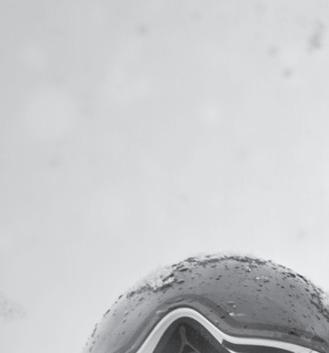









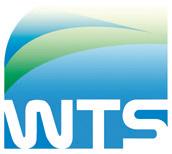







Cornelia -- Skinner
Raises, as a question
Cordial avoring

Spaghetti drainer
Sudden
Toss here and there
Long lock
Shiny wraps
Peace and quiet
Convoy chaser (hyph.)
Small, in Dogpatch
The thing’s
Musical intros
Entered data
Take advantage of
Sharp-toothed eel
Really nice people
main
Undersized pups
Dirty Harry portrayer
Alaska’s rst capital

oneself
bubbly
Be frugal

“-- vincit amor”
Flashy dressers
Batter
Whodunit suspects
Useful thing
Cooks slowly
Laundry problem
Victorian oath
Excited about
Twilight, to a poet
Not just mine
pioneer
“Watermark” chanteuse
Blisters
Geisha’s accessory
Sharpshooter Annie
Sis’s sib
piteously


Prodded along
Roams around
Horace’s poetry
Seed covers
Venomous snake
Leg bone
Dress style (hyph.)
Imitation chocolate
Hits dead-center
DEA agents
Crown wearers
Sidles past
Final authority (hyph.)
Rally starters
Brains, maybe
Drill a hole
WHEN I lived in the Old Country—Toronto— I’d make a long trek north along Yonge Street to visit a singularly talented chocolatier before Christmas. For those of you who are unfamiliar with it, Yonge Street is touted as the longest street in the world. I don’t know if that’s true, but at 56 kilometres, it’s probably a good idea to pack a lunch if you’re planning to go to its end.
I wasn’t. But I was going far enough north to see the sprawling effects of Toronto taper into something approaching relative wilderness. Out of the city proper, past Thornhill, Richmond
BY G.D. MAXWELLHill, past Aurora and nearly past Newmarket, my destination was a small, nondescript building easy to miss... except for the number of cars parked outside it.
Those in the know knew magic lay within. The particular brand of magic was an alchemical mixture of chocolate, heavy cream, butter and a few odds and ends that came together under skilled hands into a seemingly endless array of truffles. The finest I’d ever had.
I’d buy a dozen or so boxes to pass along to friends and family and share with whomever might drop by for a holiday visit.
And I’d keep one unopened.
The point of keeping an unopened box of truffles was my version of New Year’s resolutions. I never made them because I knew they were either parochial and easily met or aspirational and impossible to meet.
Instead I’d let that box of deliciousness taunt me for the whole month of January. Coveted but untouched. Tempting but off limits. I figured if I could withstand the temptation for the 31 days of January, I could suffer any hardship knowing I had a chance to emerge at the end of it intact.
A cruel irony slapped me in the face every Feb. 1, when I’d open the box and realize even the world’s best truffles had a best-before date.
I’d eat them anyway. Hell, that was the whole point, assuming there was one.
Over the years I’ve weakened, made a few resolutions. It’s almost required of columnists to make resolutions. Last year I made seven. My success rate was not outstanding.
I resolved to be less cynical. Even as I wrote the words I knew that wasn’t likely to happen, absent a lobotomy.
I resolved to fire up my long-shelved Start Smoking seminar to give people suffering from low self-esteem a chance to succeed at something, anything. The one person closest to my heart threatened repercussions too dire to contemplate if I did. So I didn’t.

I may have skied fewer days last year; I’m not certain, since I generally don’t keep count. And I don’t believe I skinny skied more even though that’s a pretty low bar.
Didn’t get sued. Did annoy local elected leaders.
And somehow I didn’t retire. Well, I did suggest it might be a good idea, but it wasn’t well received. My apologies to those whose
hopes I’ve crushed.
Given a lacklustre batting average, I’m swinging for the fence this year. I’m only making one resolution.
No more customer surveys. They’ve gotten out of control, and if past experience proves anything it’s that the companies using them don’t pay any attention to my responses.
What started out as a pretty good idea— net promoter scores—has morphed into a cynical exercise whereby companies try to con us into believing our concerns are their
just repeating the same questions with a few changed words.
They come too frequently. A call to the insurance company to update a policy was followed by one wanting to know if the agent I eventually spoke to was friendly and knowledgeable. An online purchase I haven’t received yet was followed by another survey. How am I supposed to know whether I’d recommend the company yet?
And then, if the feedback from friends is any indication, there’s the one we all get far too
Why those scores? Because I live here, and unless I lose the ability to walk or die, I’m pretty sure I’ll ski WB again. That’s why I moved here.
But until WB starts offering value for the price of skiing here, I wouldn’t recommend it. And by value, I mean the whole experience, not just the price of a cheap Epic™ Pass.
It means runs that are fully groomed so skill-challenged skiers and boarders can get down them without being a threat to themselves and everyone within collision range.
It means getting lifts open at a reasonable time of the morning so those who can manage can get up into terrain the skill-challenged are less likely to threaten. Yeah, I know that means patrol might need to start earlier, but having lived through years when it was possible, I know it’s not impossible.
It means having lifts that don’t stop all the time. Whether that comes down to maintenance or more well-organized entry and exit points, anyone who’s skied in Europe knows it’s possible. Funny how many of them mention it as part of their WB experience.
concerns. Hey, tell us what you think about your experience in this brief survey!
The notion behind the exercise was to create a quick and easy metric to determine the likelihood a customer would recommend a company or gadget to their friends. Its first derivative followed up the ubiquitous 1-to-10 rating with an open-ended “why” box allowing a few characters to explain your answer.
Fair enough. But the more recent ones go on and on and on until you’ve forgotten your previous answers and suspect they’re
often. You know the one. “Share your thoughts on your recent Whistler Blackcomb experience.”

The only explanation I can come up with for why they keep sending it to me is this: They can’t possibly read what I say and continue to ask my opinion. Truth is, I’m always half worried they’ll cancel my pass if they do read it.
How likely are you to ski at Whistler Blackcomb again? One hundred per cent, 10/10.
How likely are you to recommend Whistler Blackcomb to friends and family? 0/10
It means actually caring about our guests’ experience. The guest service mantra at WB used to be aspirational—exceed our guests’ expectations. Now it seems more like the old joke, “Guest? I don’t remember inviting you here.”
I hope to ski here until I shuffle off this mortal coil. I hope it gets better. Maybe if I didn’t know it could be better I wouldn’t care. But having lived through better I know what a shame it is to experience what it has become.
Find the love, Vail. Do better. ■
Laura Wetaski 604-938-3798

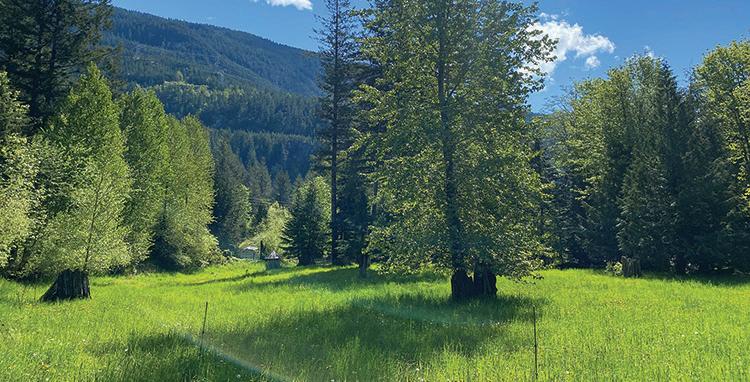







Maggi Thornhill prec* 604-905-8199
Allyson Sutton prec* 604-932-7609
Kathy White 604-616-6933 Carmyn Marcano 604-719-7646








